Dermatology
1/341
There's no tags or description
Looks like no tags are added yet.
Name | Mastery | Learn | Test | Matching | Spaced |
|---|
No study sessions yet.
342 Terms
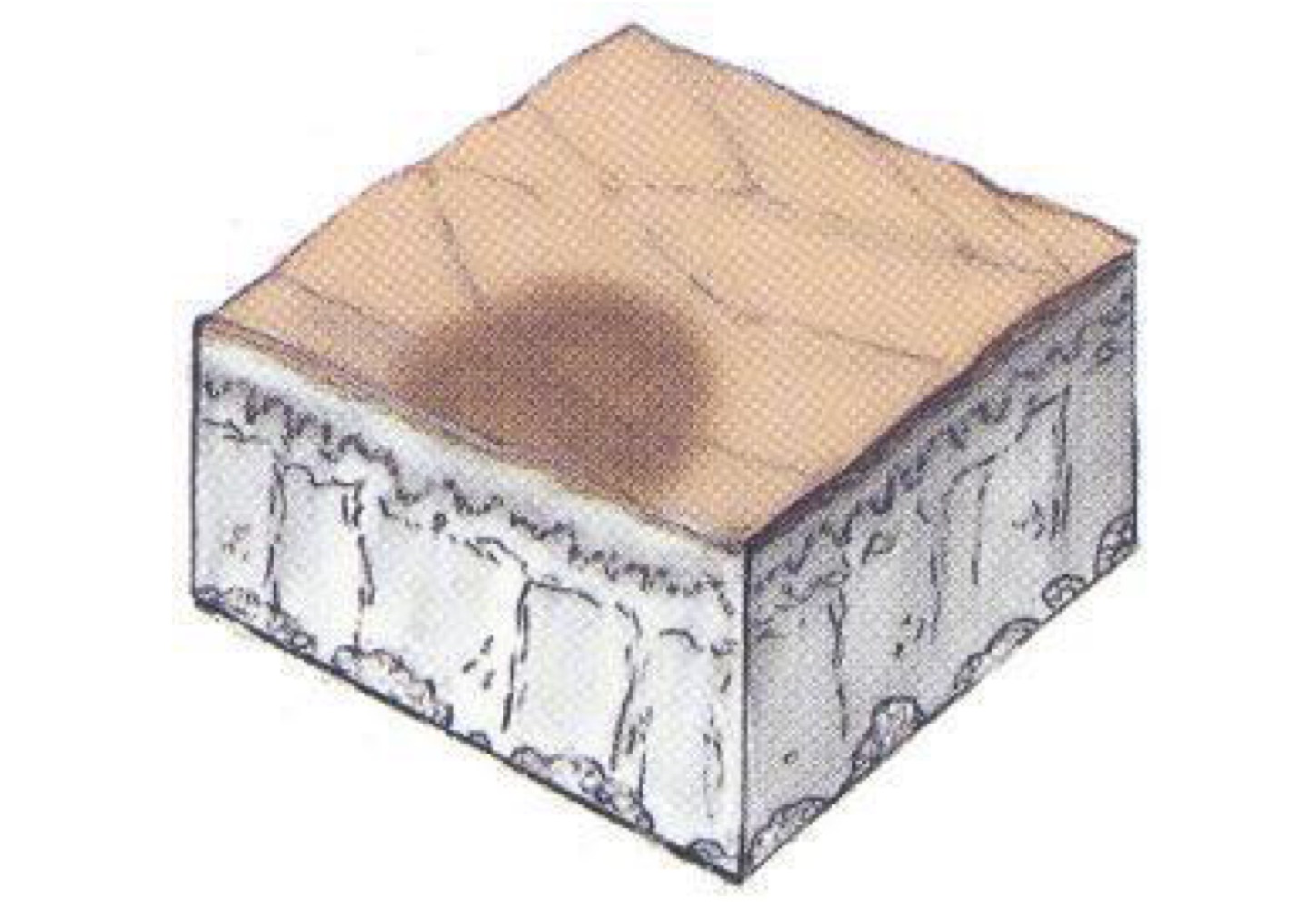
what type of skin lesion is this?
macule
flat, nonpalpable spot <1cm diameter
macule
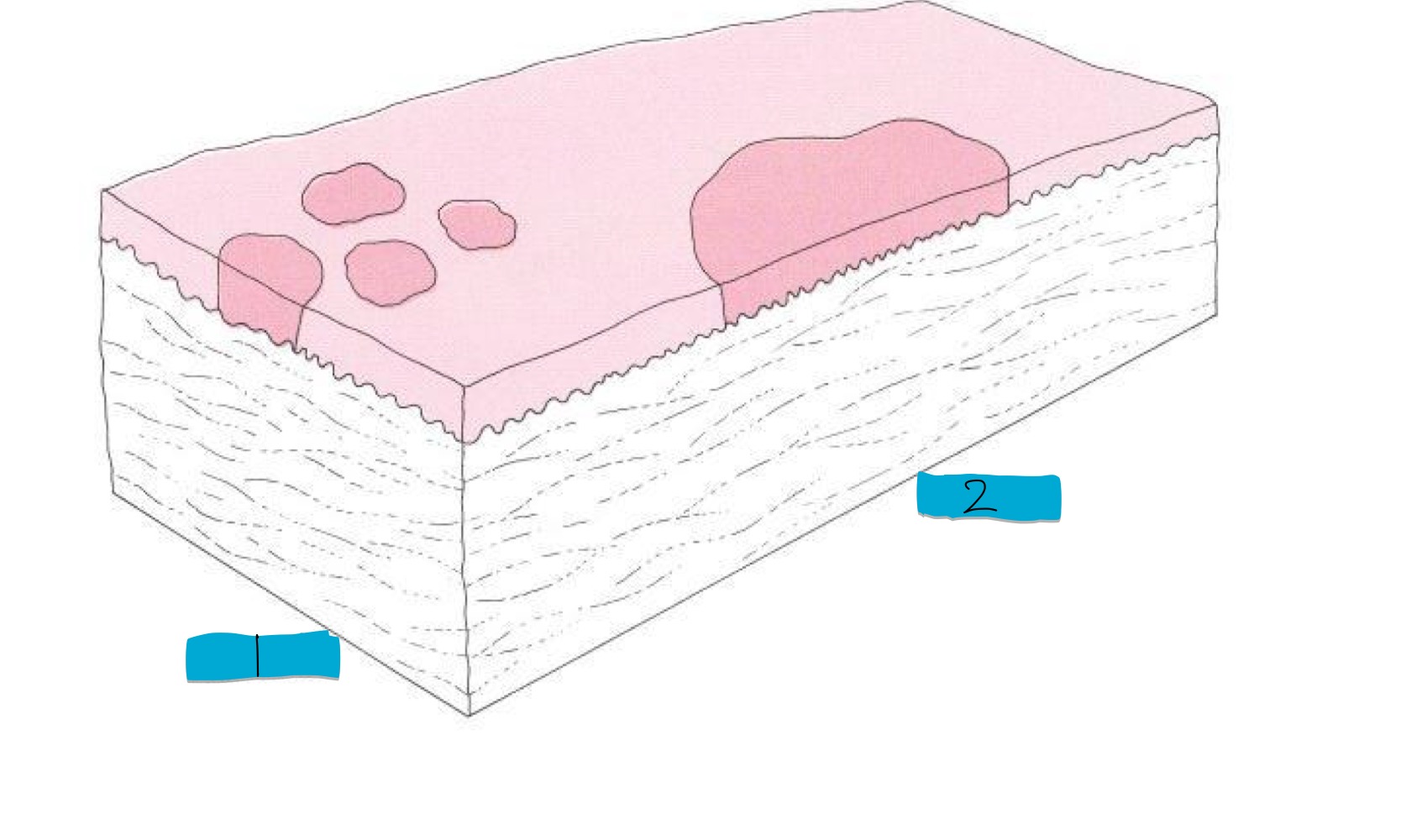
what type of skin lesion are these?
macule
patch
macule > 1cm diameter
patch
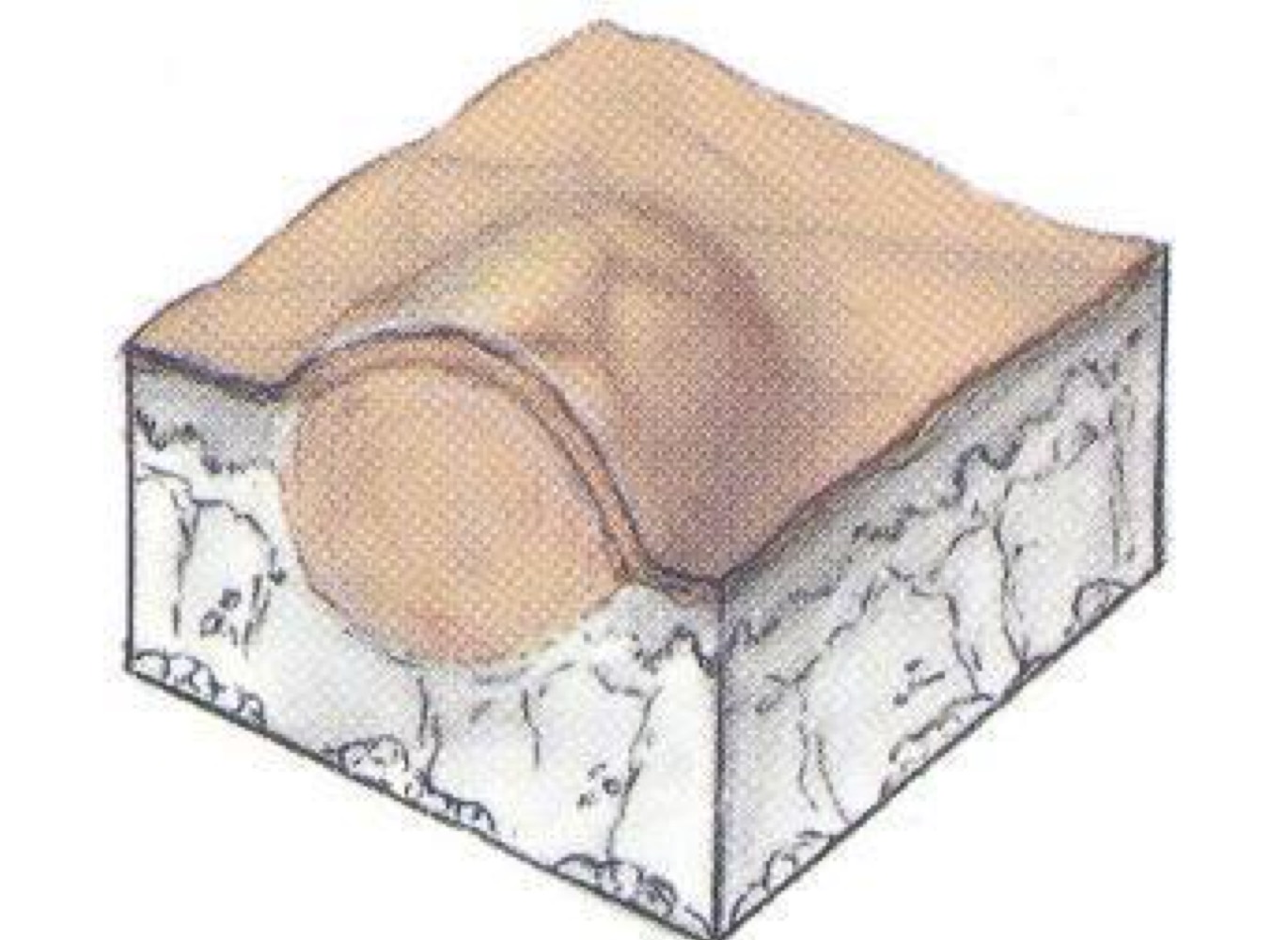
what type of skin lesion is this?
papule
palpable, elevated bump <1cm
papule
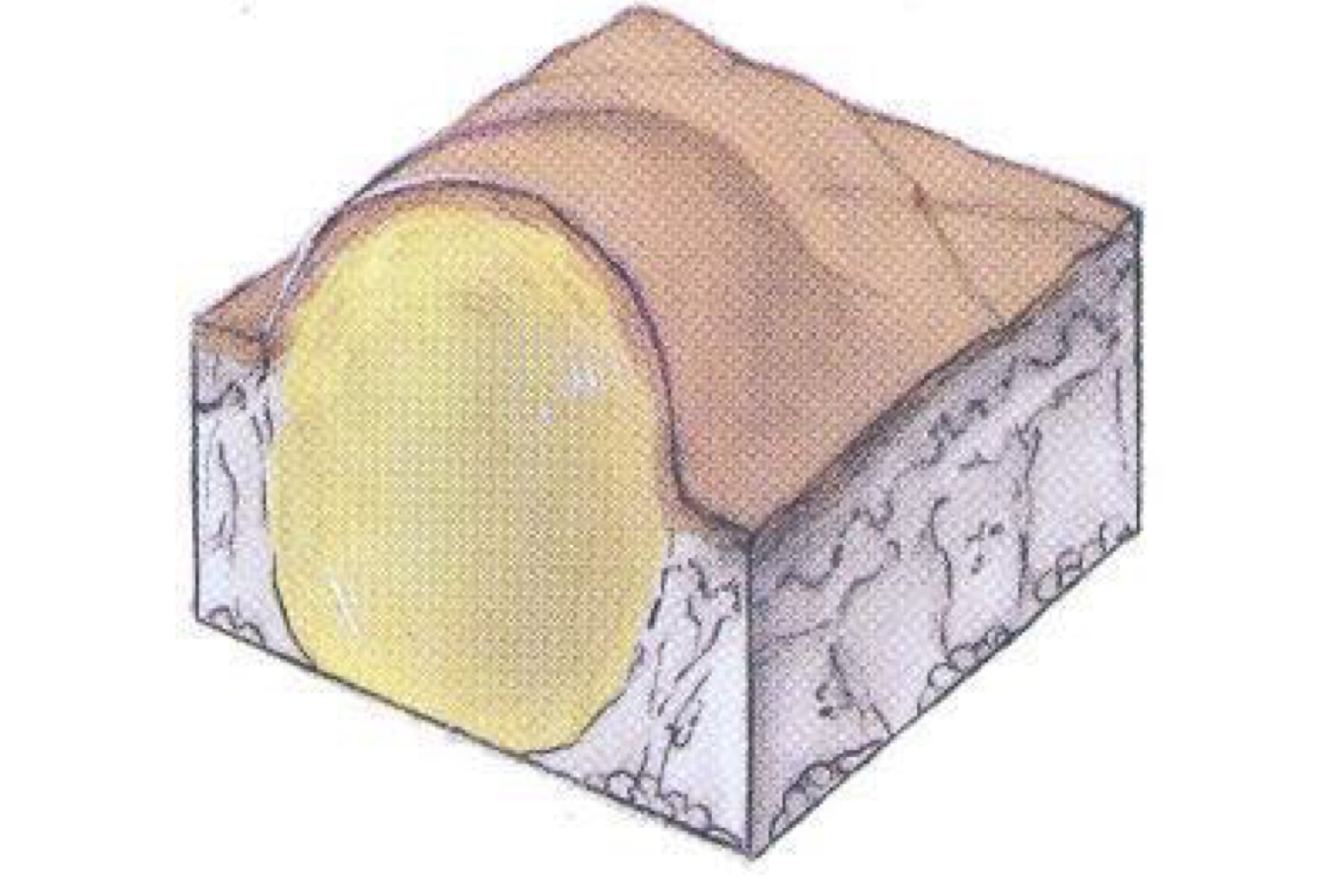
what type of skin lesion is this?
nodule
papule 1-2 cm diameter
nodule
nodule >2cm
tumor
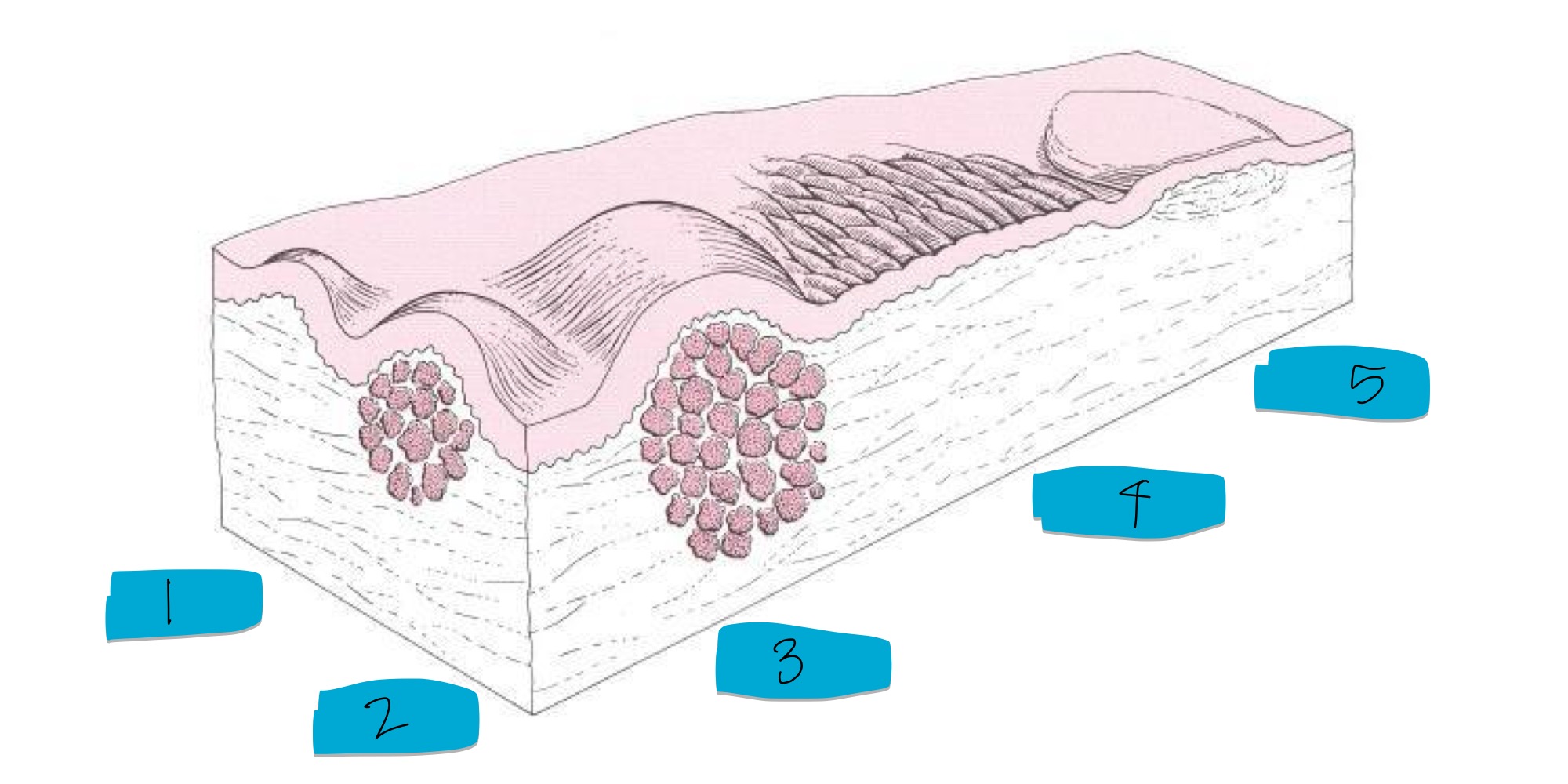
name these skin lesions
papule
nodule
tumor
plaque
wheal

what type of skin lesion is this?
plaque
flat, plateau like, slightly elevated lesion
plaque
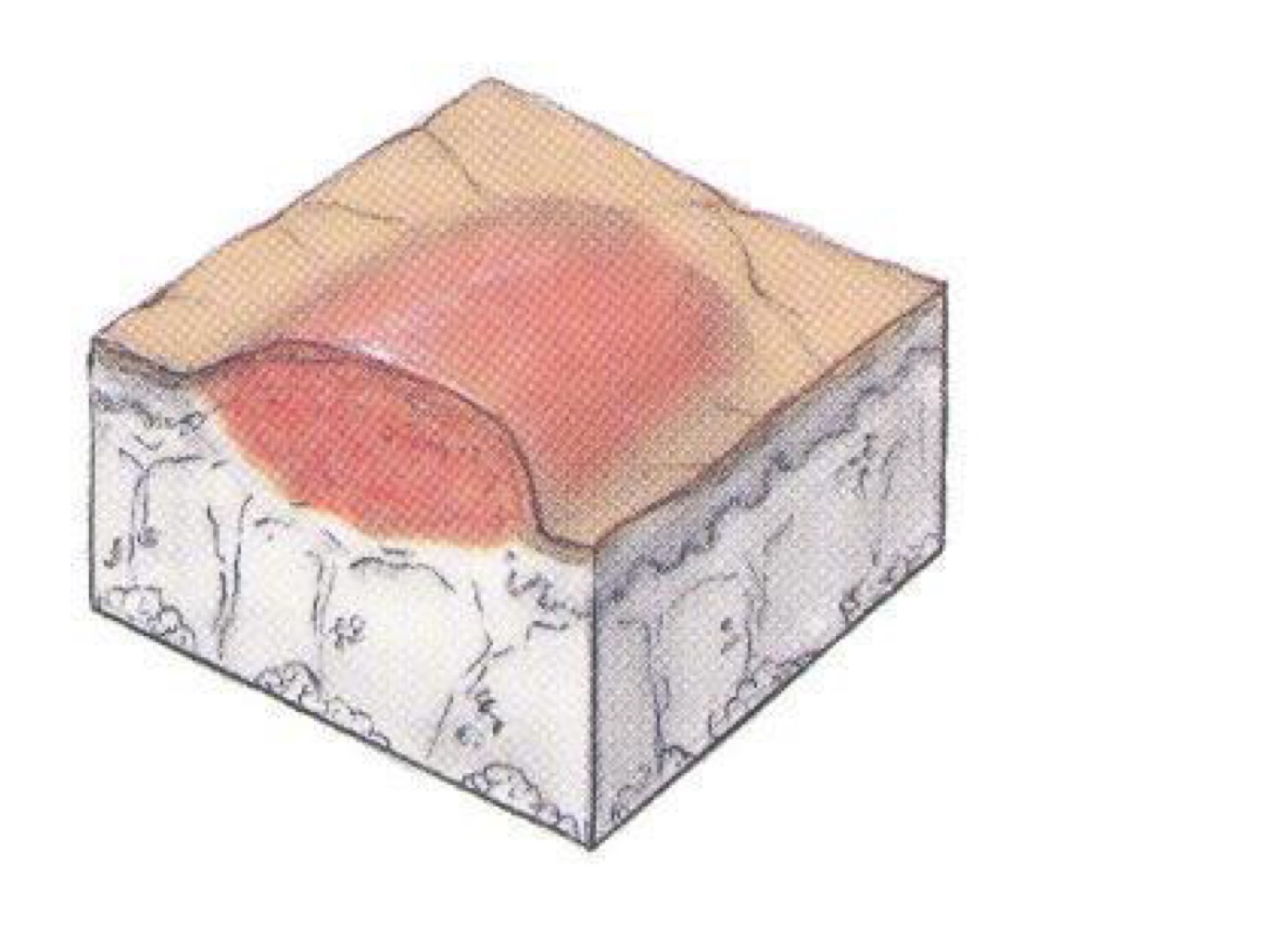
what type of skin lesion is this?
wheal
temporary elevation of skin due to edema
wheal
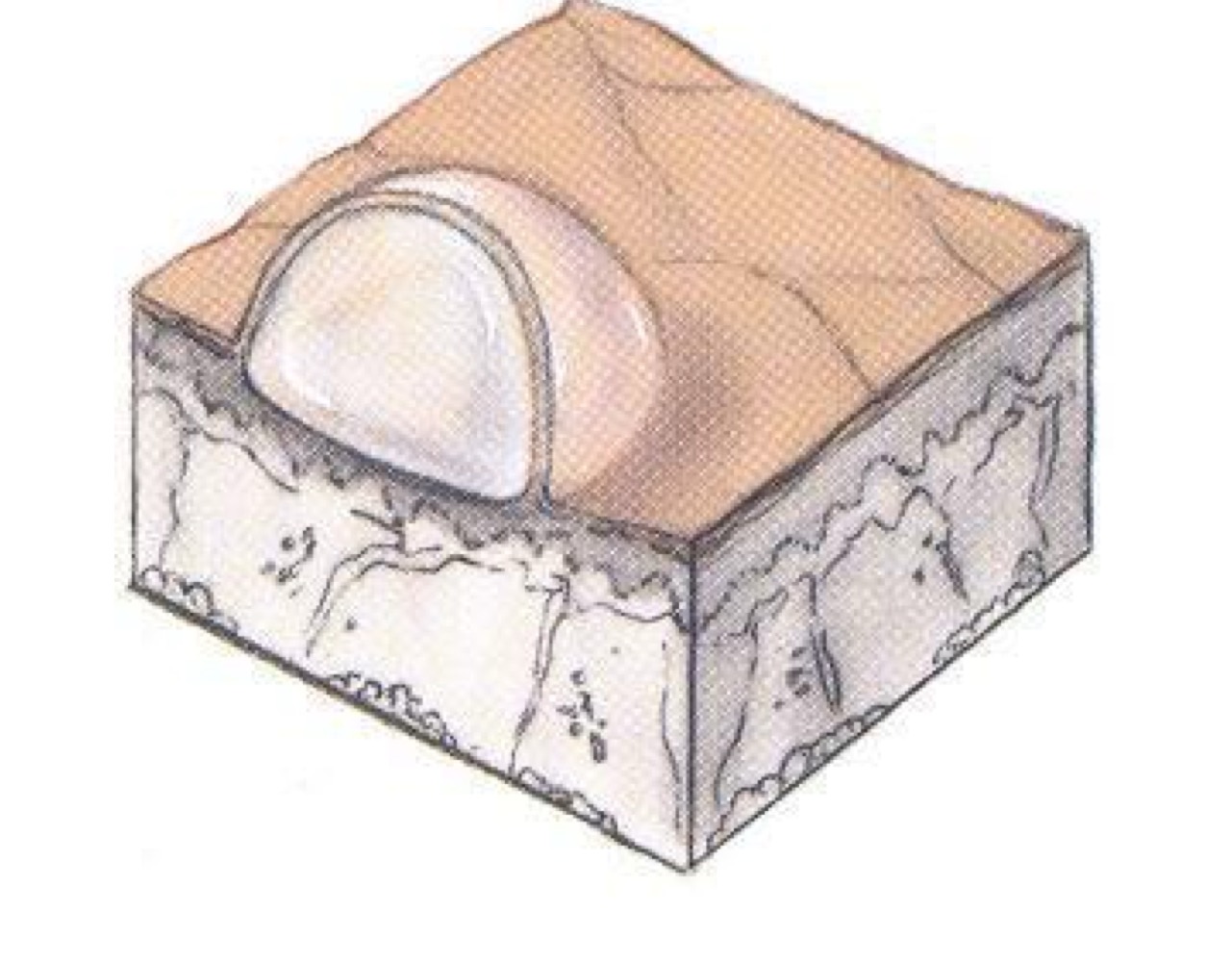
what type of skin lesion is this?
vesicle
palpable, fluid filled bump <1cm diameter
vesicle
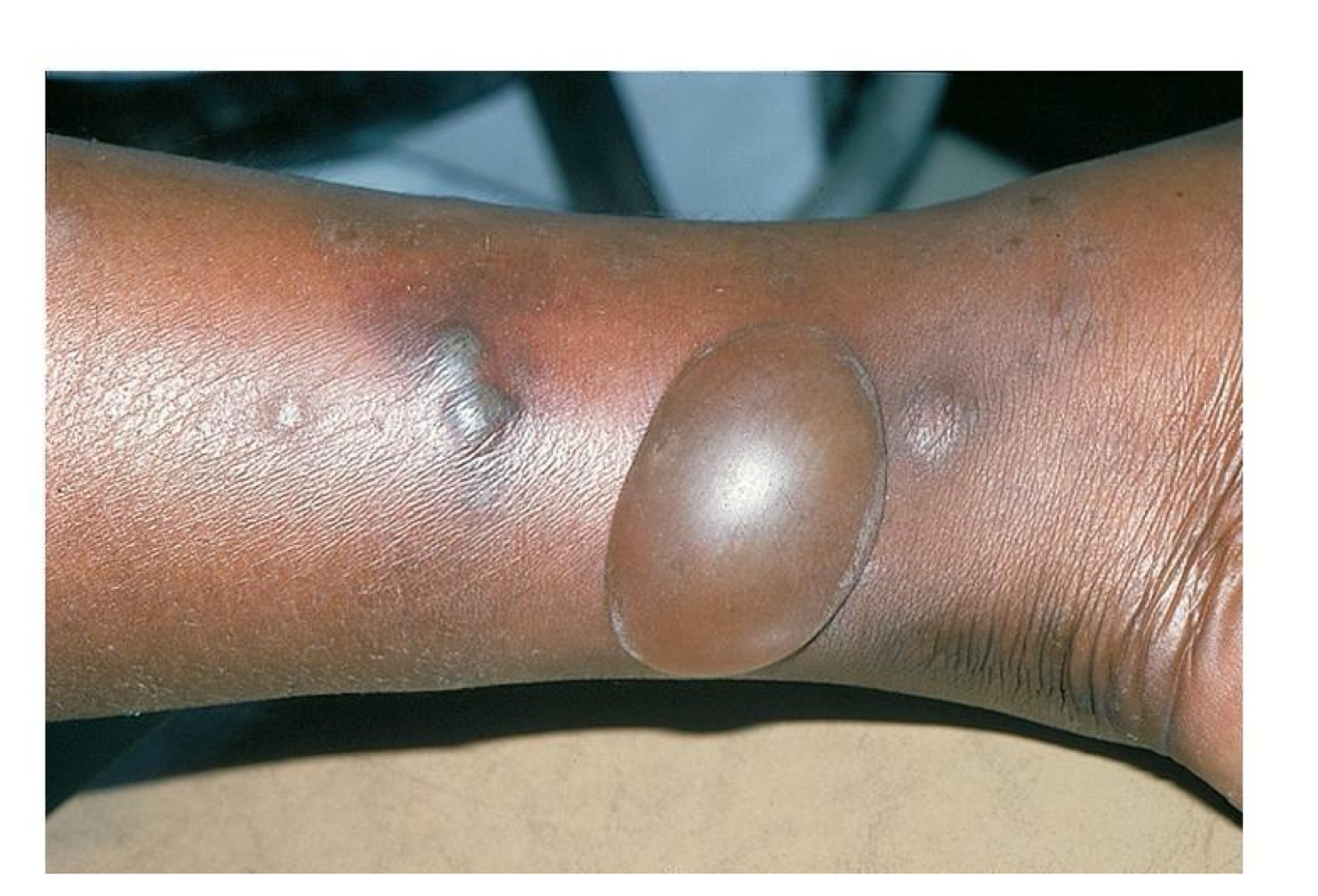
what type of skin lesion is this?
bulla
vesicle >1cm
bulla
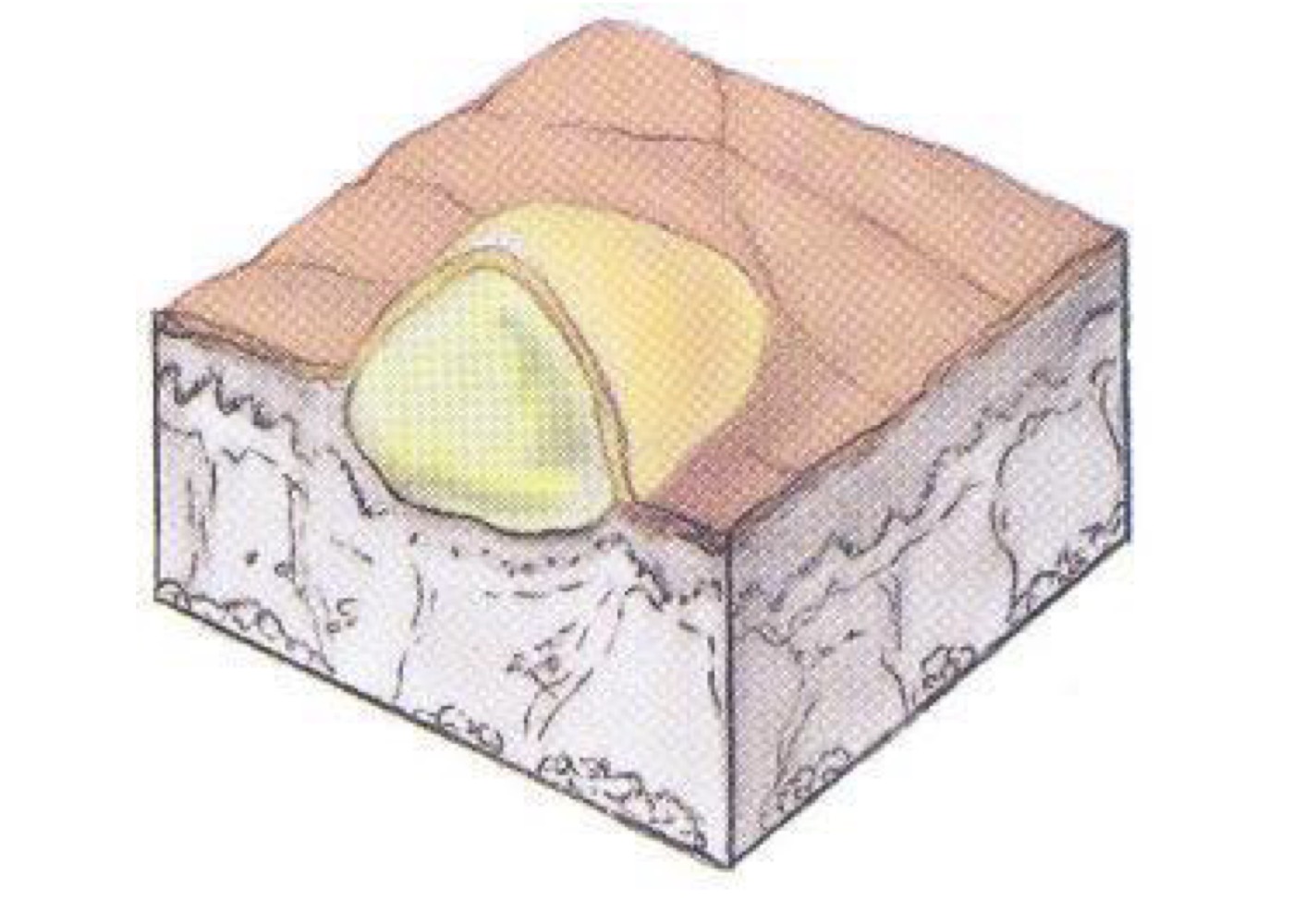
what type of skin lesion is this?
pustule
vesicle filled with pus
pustule
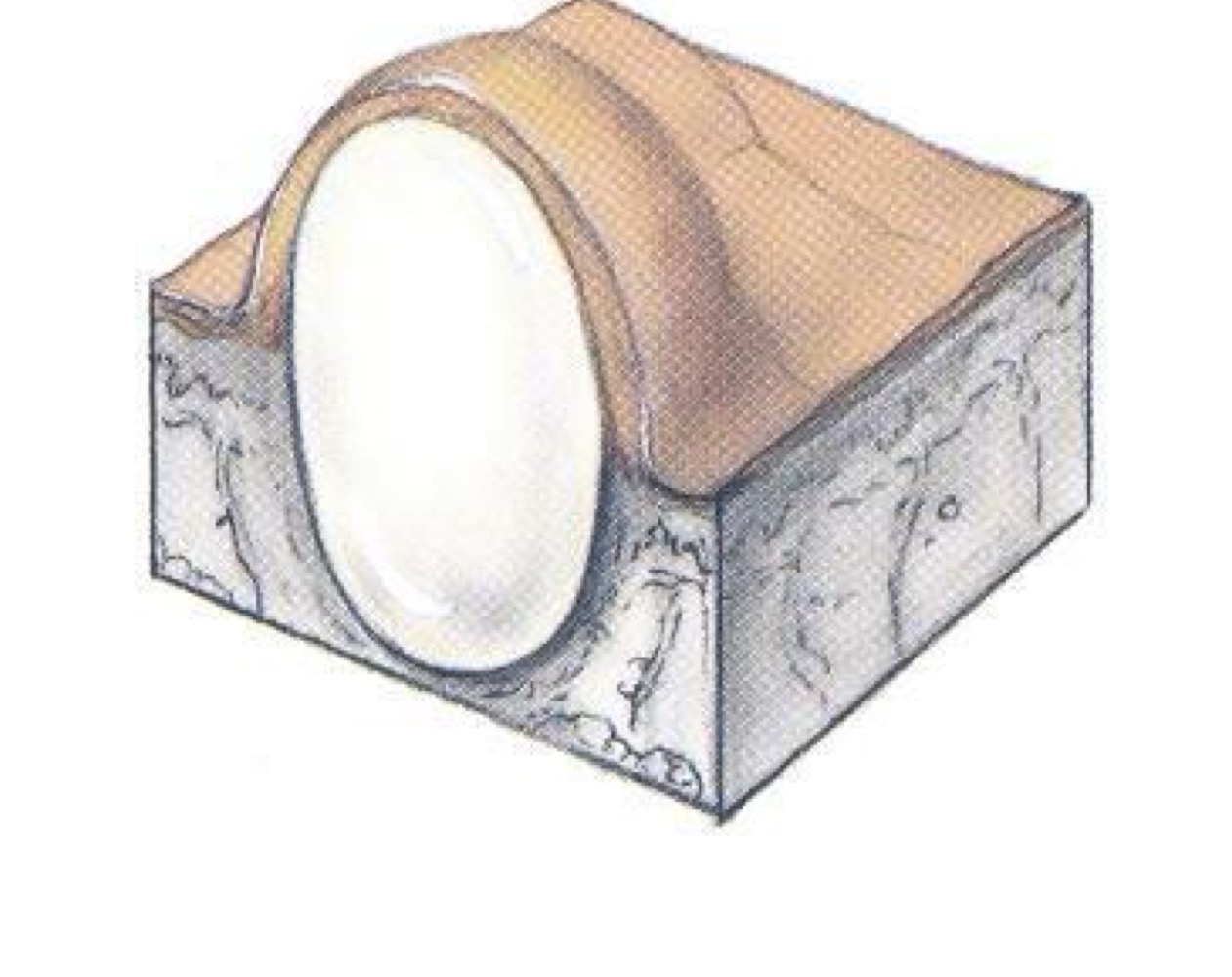
what type of skin lesion is this?
cyst
larger and deeper pustule
cyst
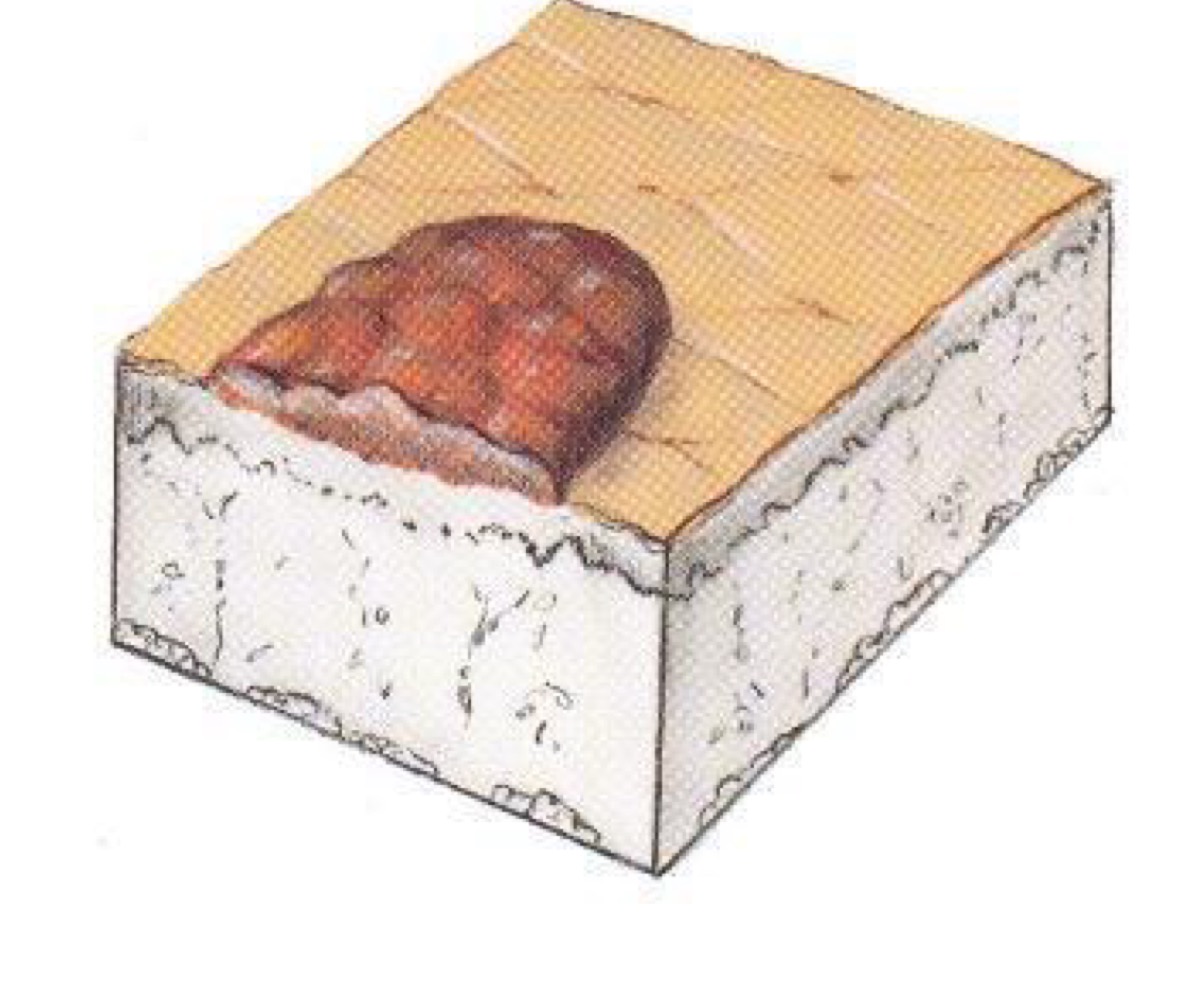
what type of skin lesion is this?
crust
dried residue of pus or blood
crust
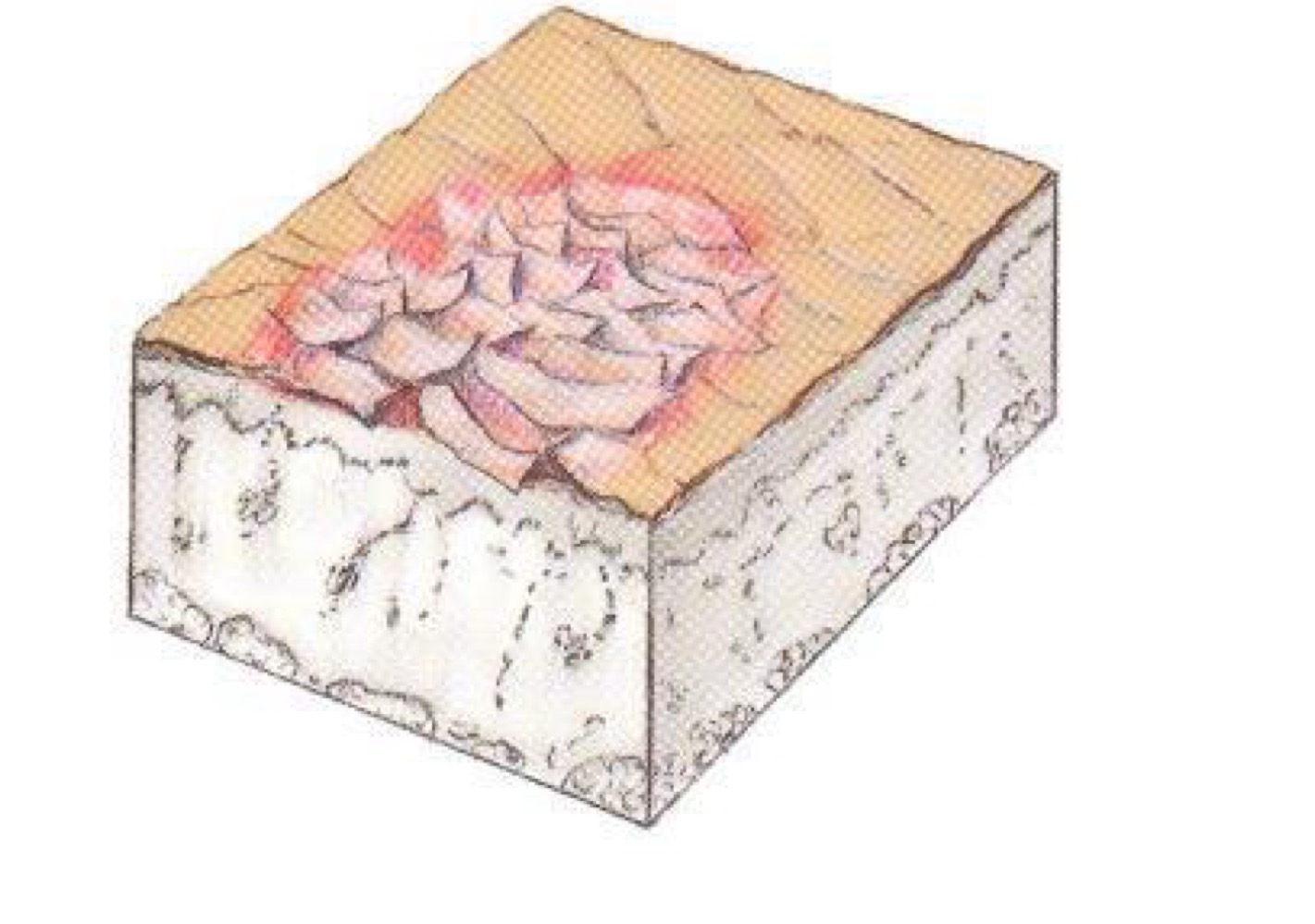
what type of skin lesion is this?
scale
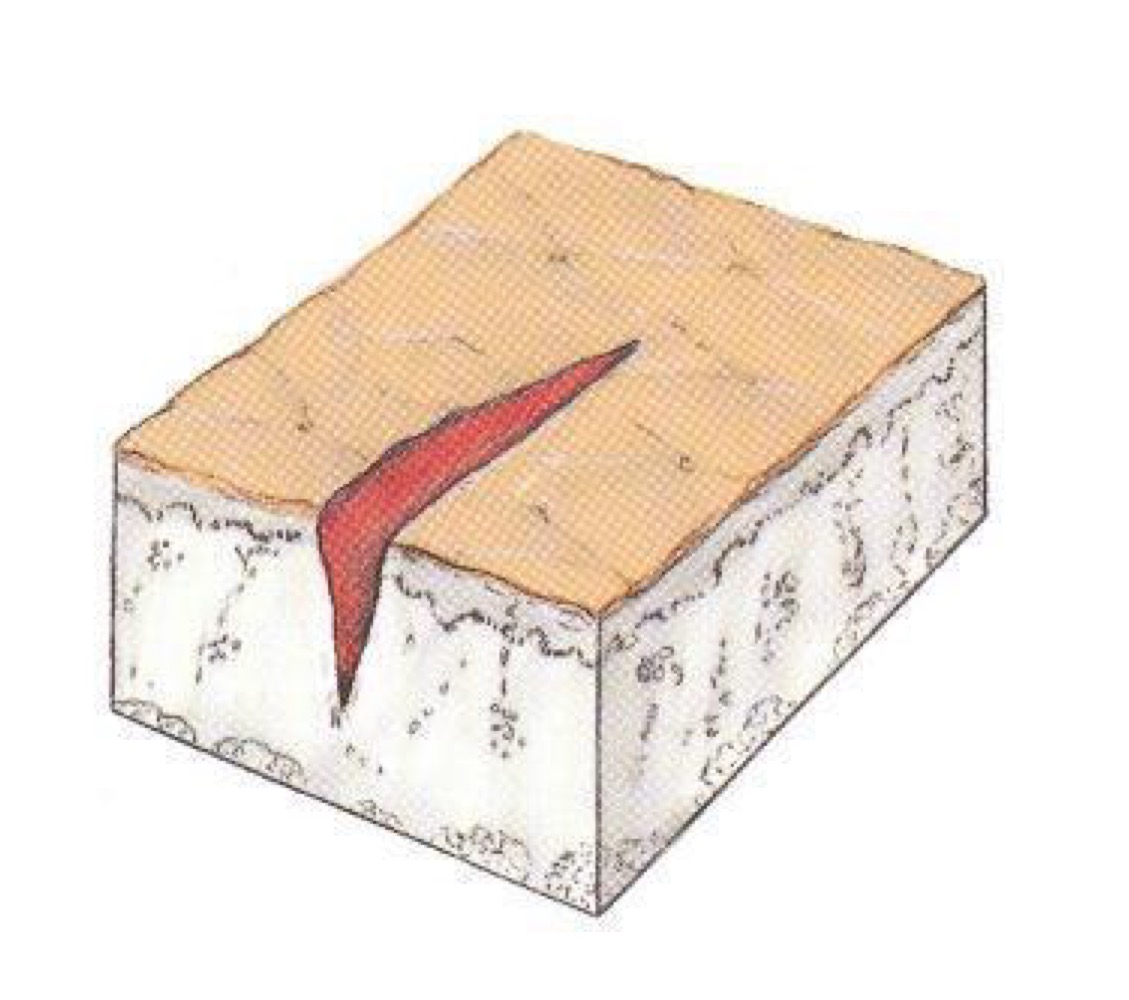
what type of skin lesion is this?
fissure
linar crack that extends into the dermis
fissure
flakes of exfoliated skin
scale
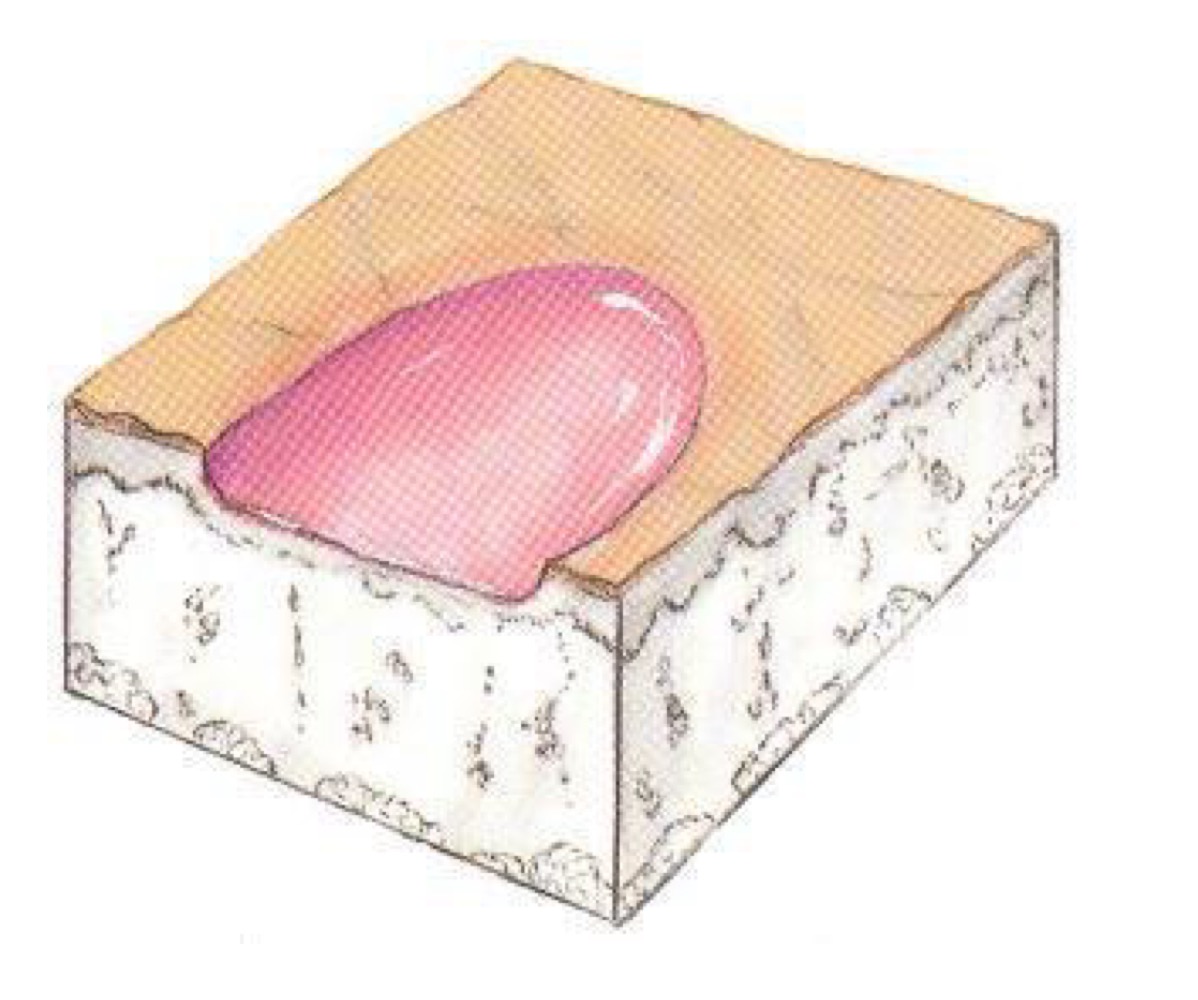
what type of skin lesion is this?
erosion
moist and not bleeding area of epidermis that heals without scarring
erosion
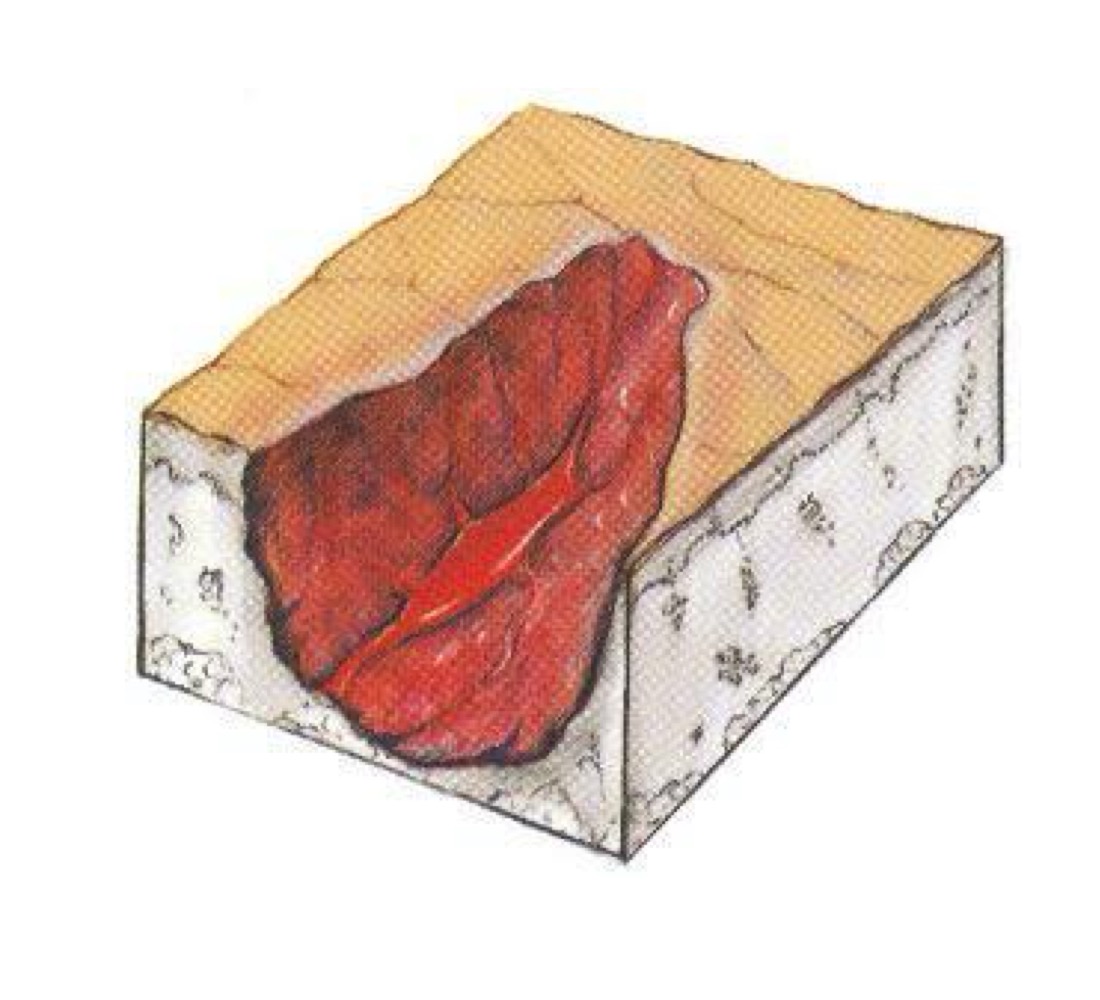
what type of skin lesion is this?
ulcer
erosion but deeper into dermis, may bleed, heals with scar
ulcer
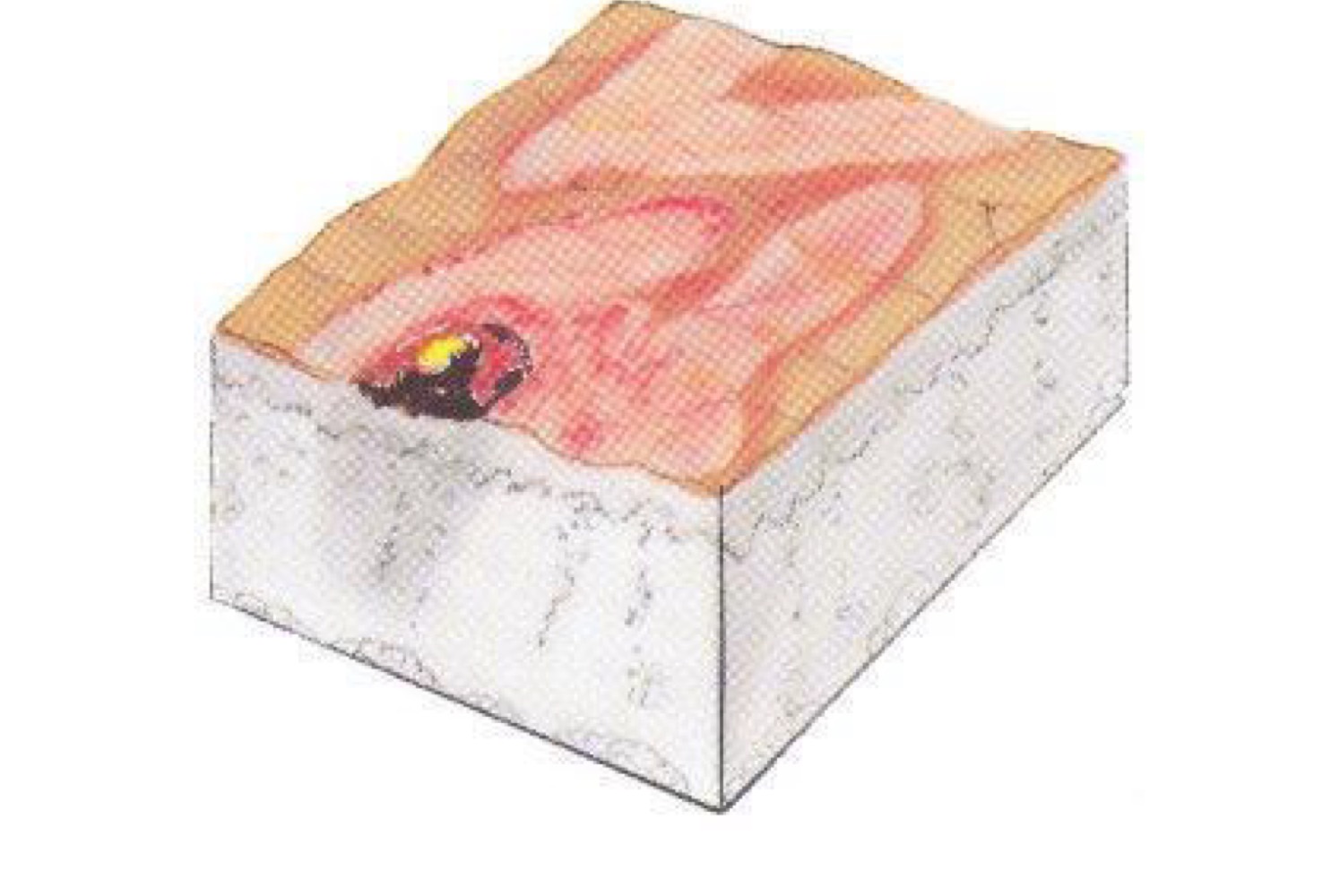
what type of skin lesion is this?
excoriation
superficial abrasion, usually result of scratching intense intch
excoriation
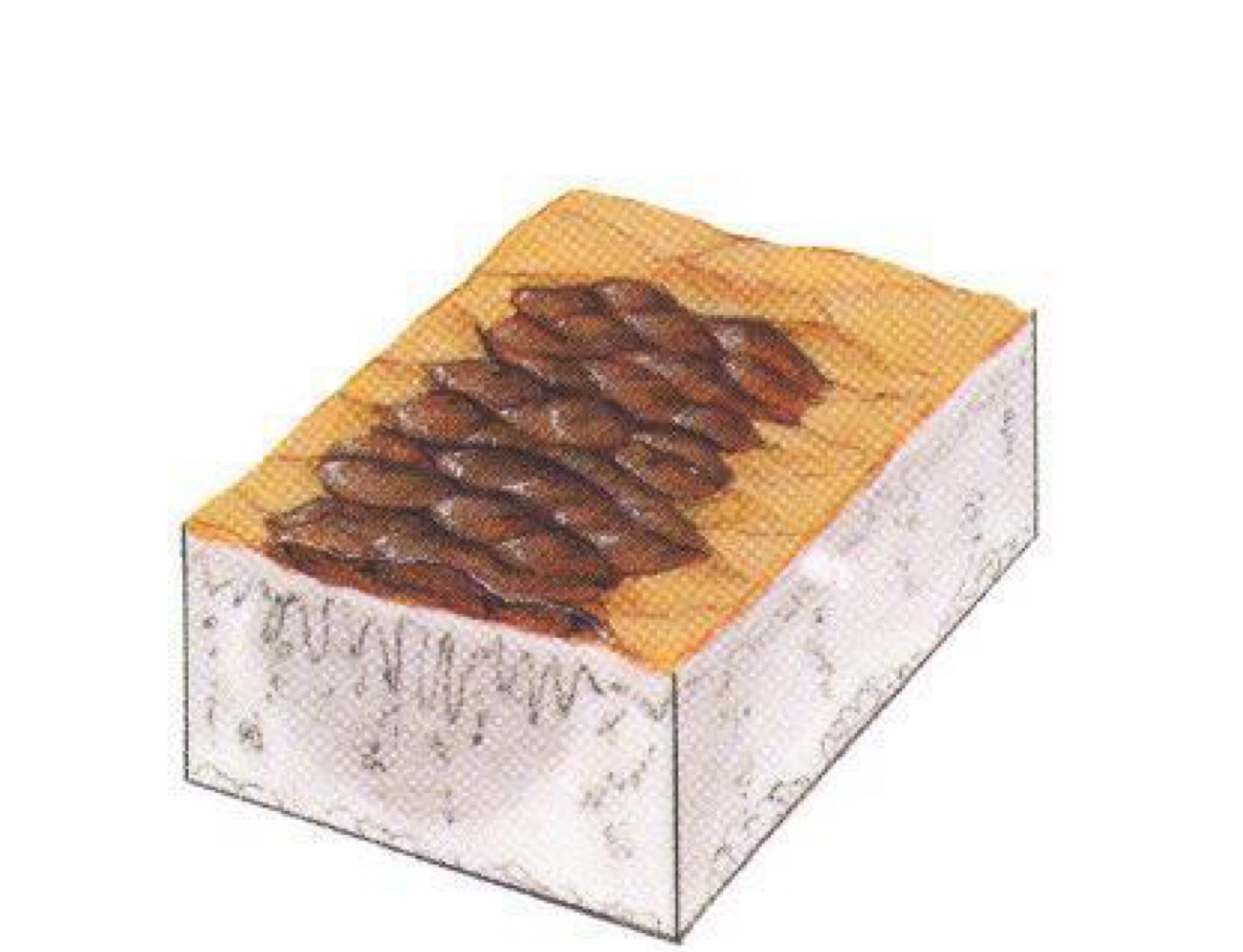
what type of skin lesion is this?
lichenification
prolonged scratching causing epidermis to become rough and thickened, similar to plaque
lichenification
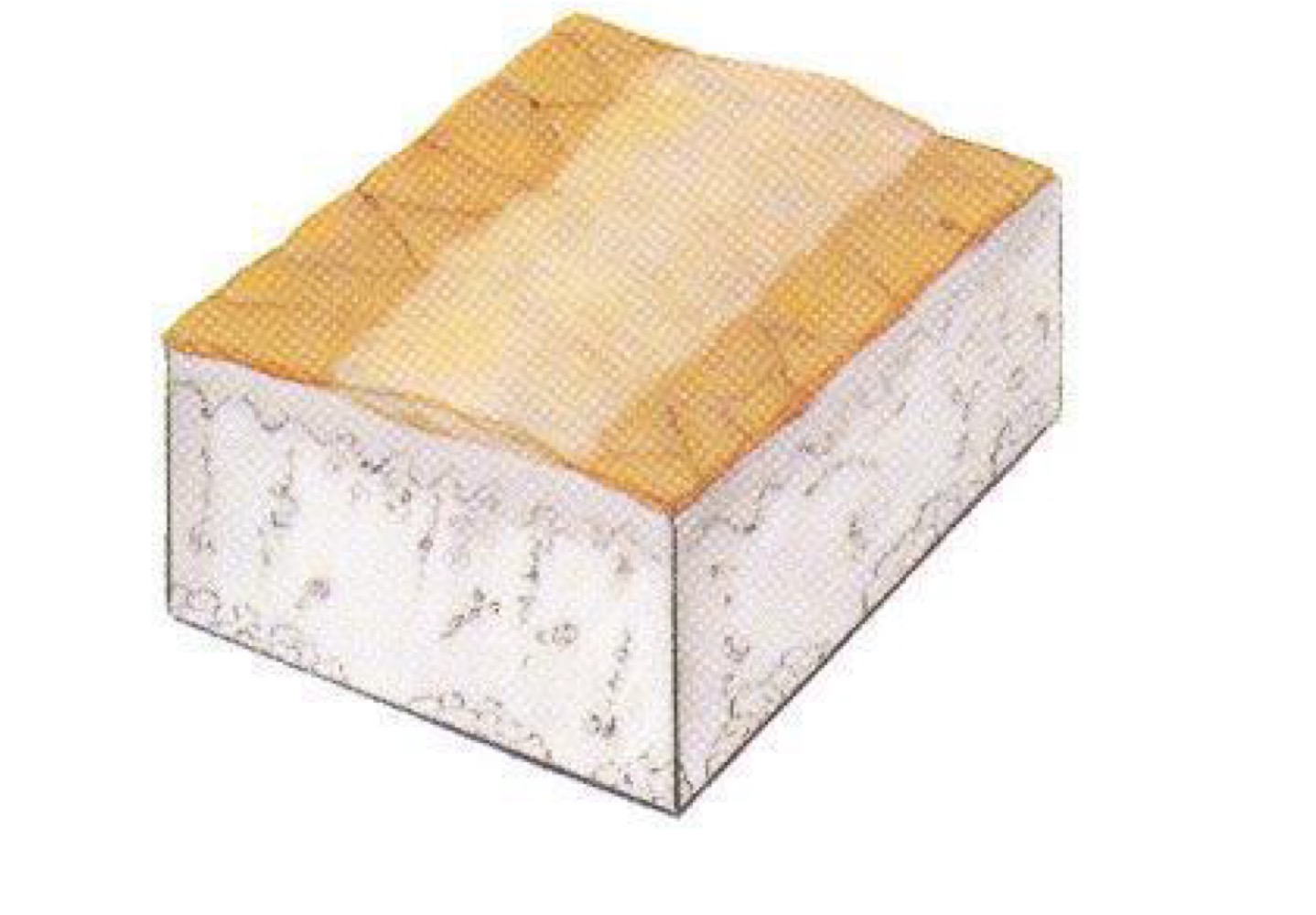
what type of skin lesion is this?
scar
injury to dermis heals, replaced by fibrotic connective tissue, thin and pink at first and then pale and atrophic later
scar

what type of skin lesion is this?
keloid
hypertrophic elevated scar
keloid
sclerosis or hardening of tissue
induration
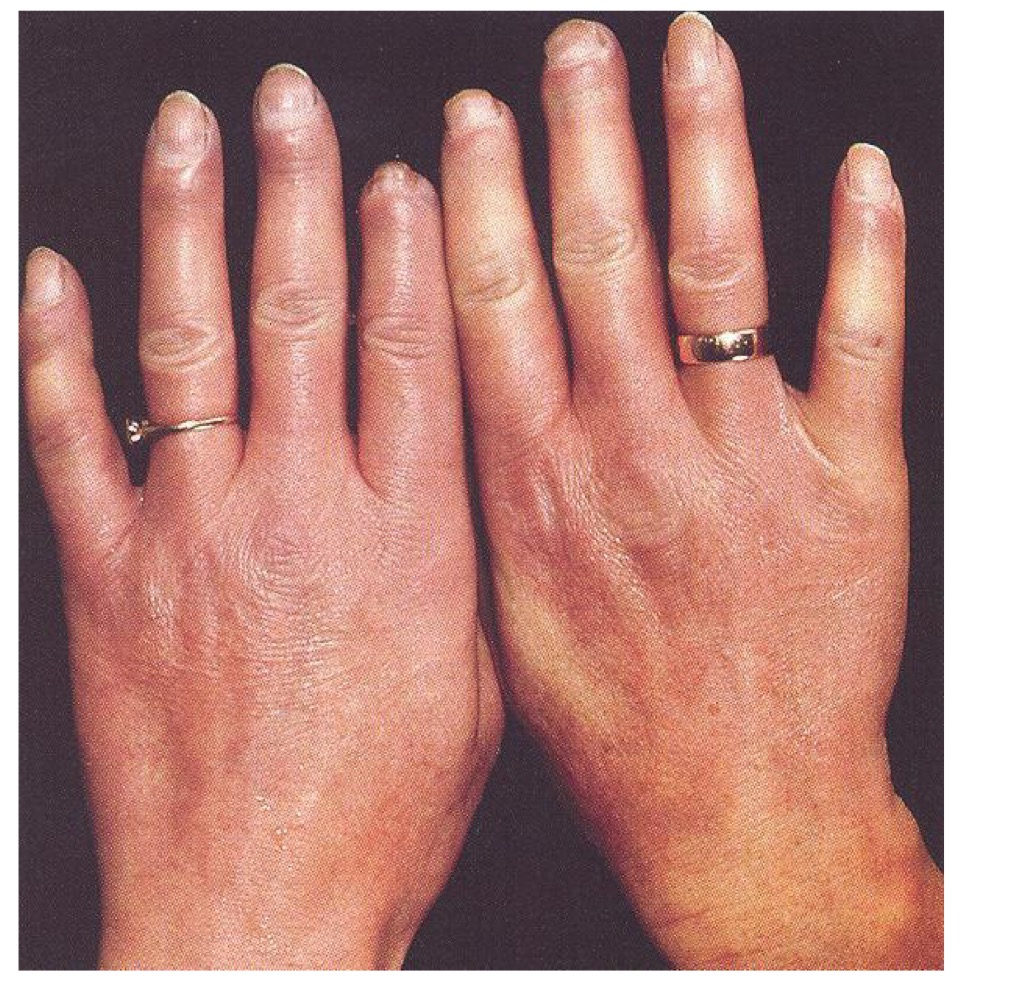
what type of skin lesion is this?
induration
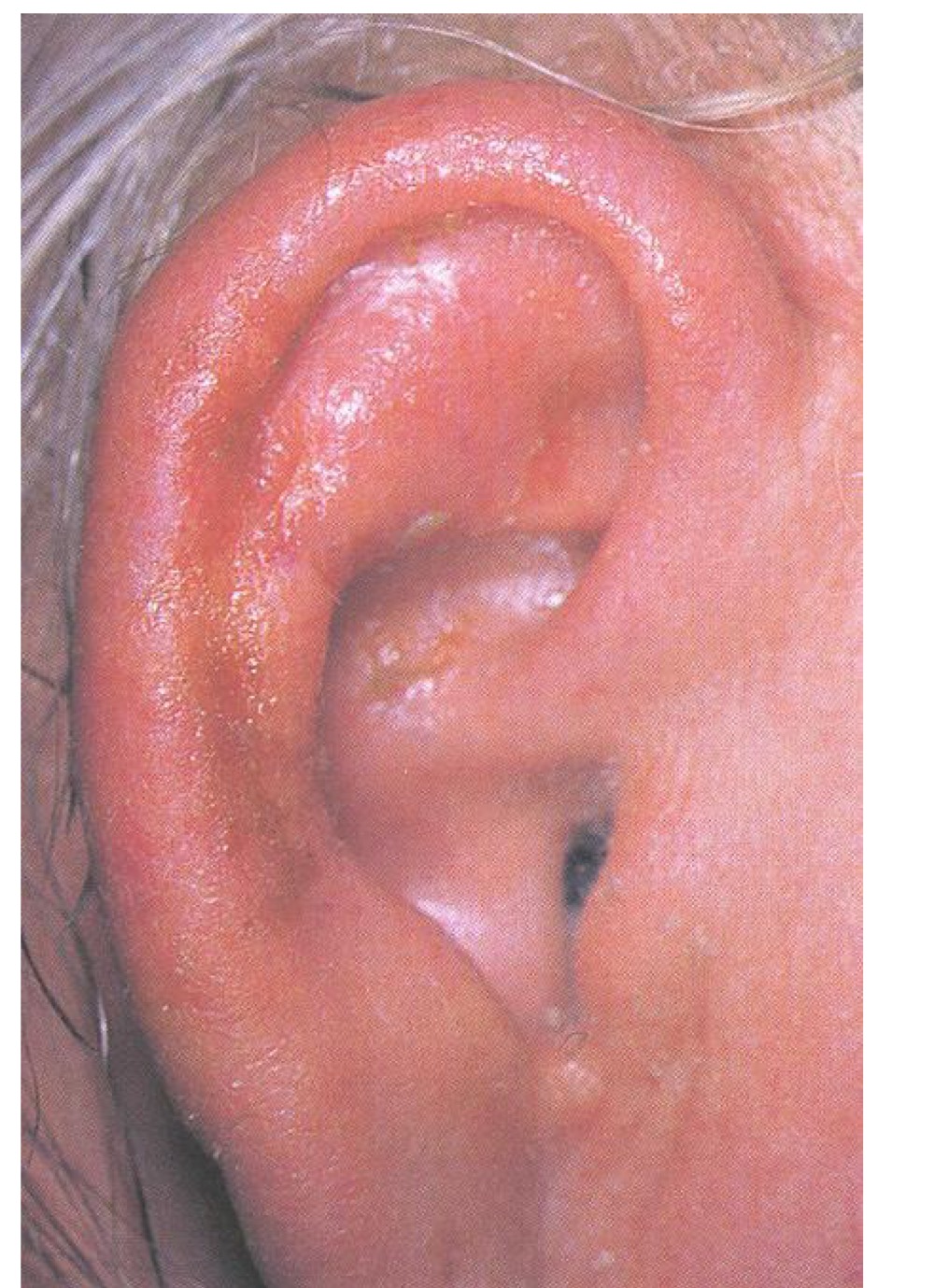
what type of skin lesion is this?
maceration
softened epidermis due to prolonged moist conditions
maceration

what type of skin lesion is this?
petechiae
small hemorrhages <.5cm diameter
petechiae
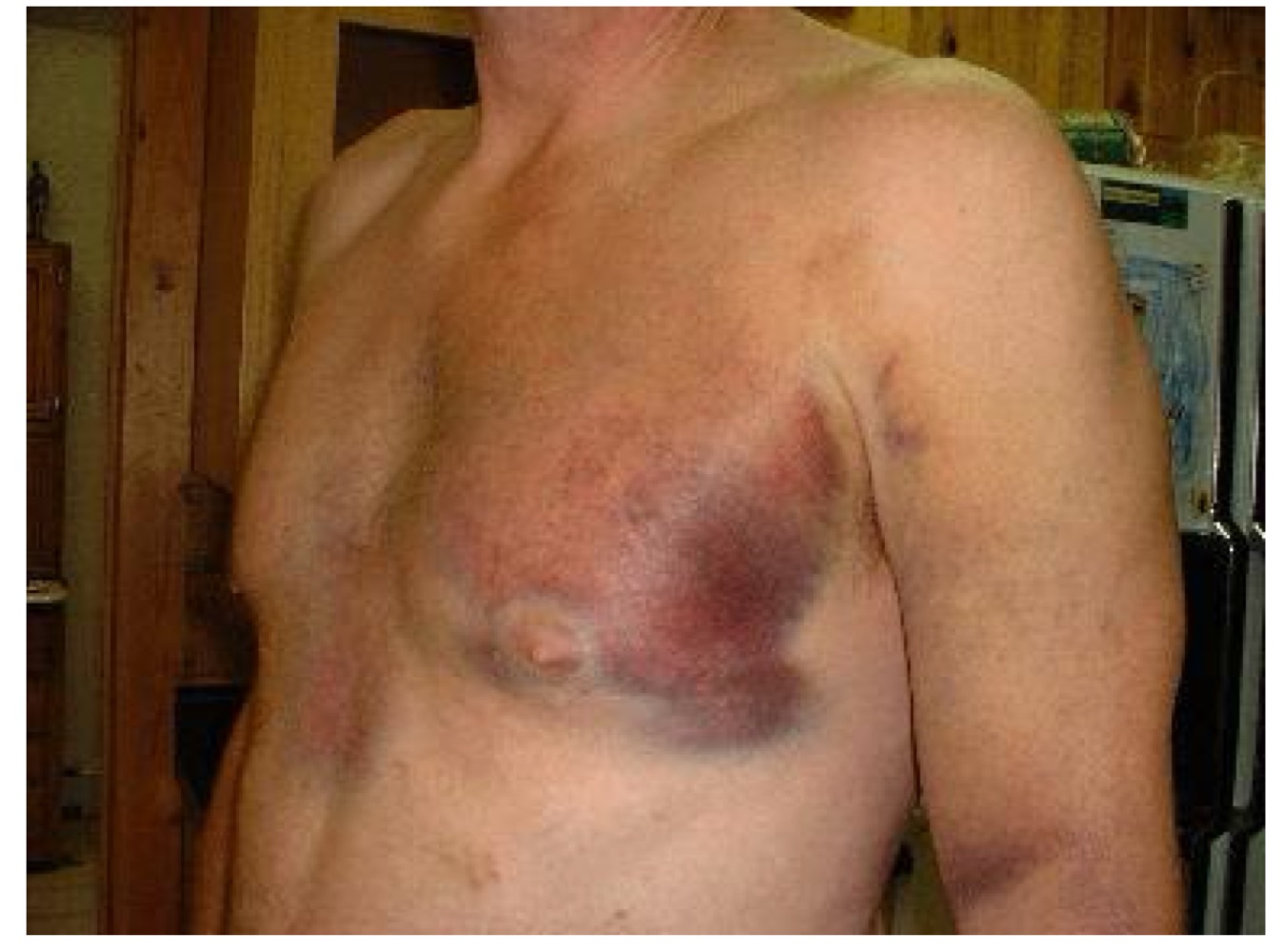
what type of skin lesion is this?
purpura
hemorrhages >.5 cm diameter
purpura
purpura caused by trauma
ecchymosis/bruise
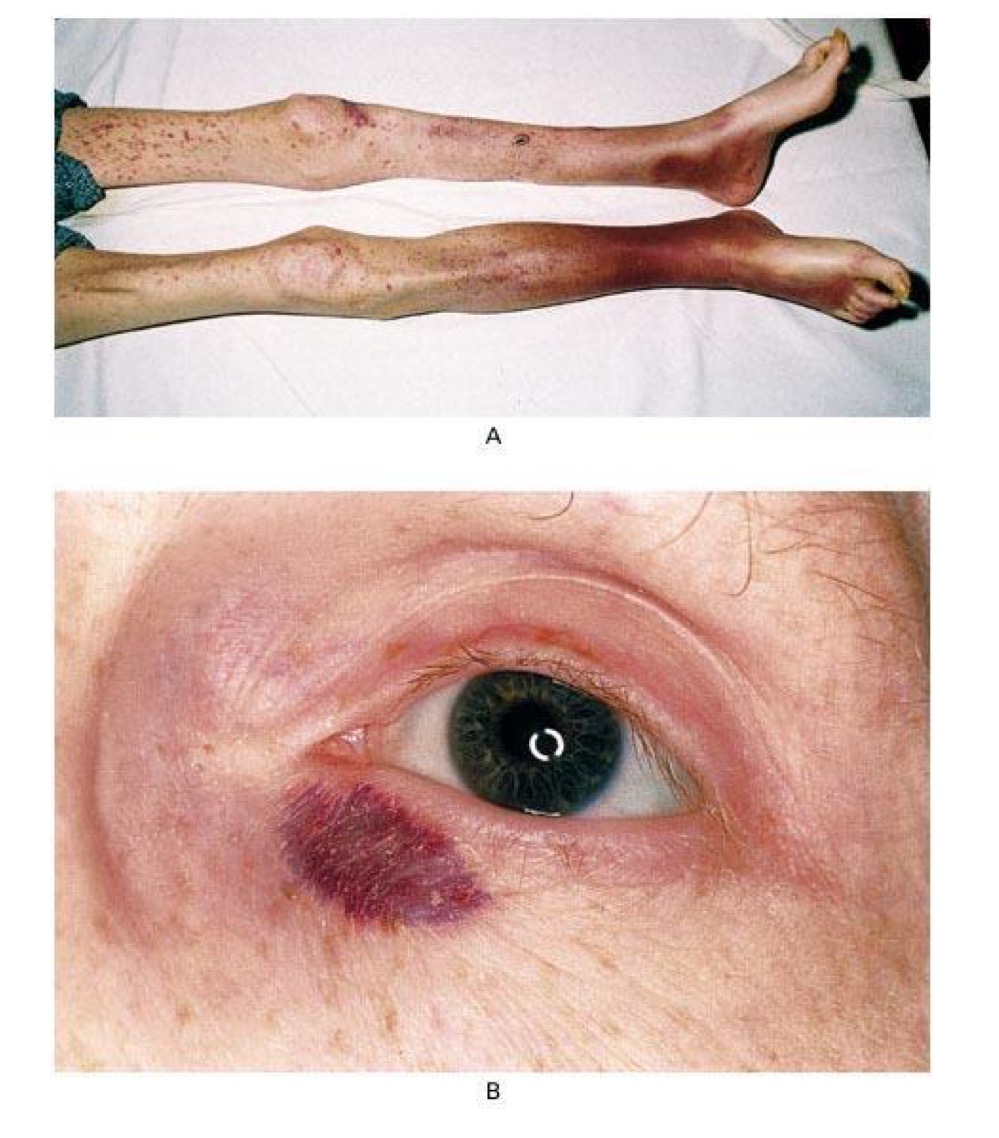
what type of skin lesion is this?
purpura

what type of skin lesion is this?
eccyhmosis/purpura
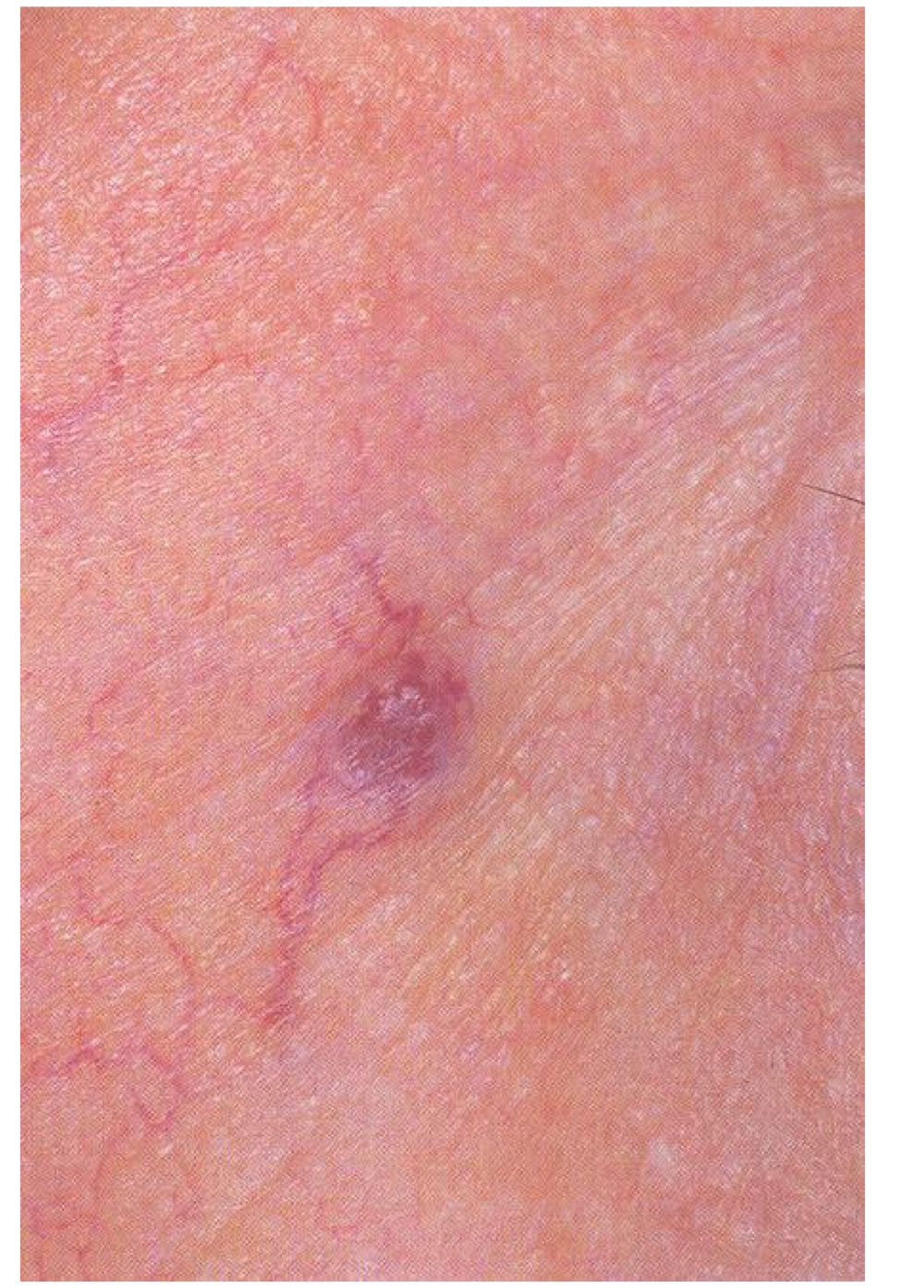
what type of skin lesion is this?
telangiectasia
fine irregular lines due to dilated capillaries
telangiectasia
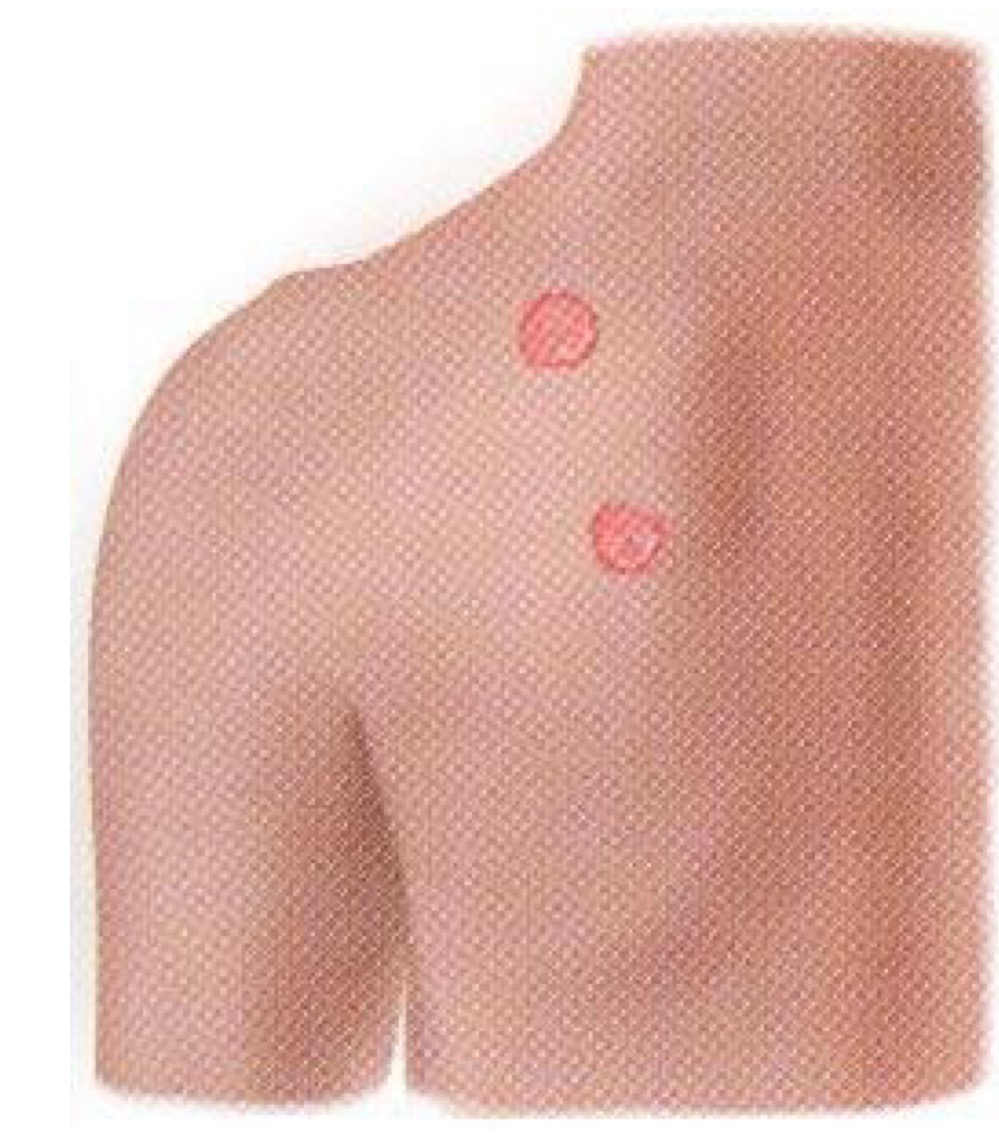
what pattern of skin lesion is this?
annular
description of skin lesion that is circular or ring shaped
annular
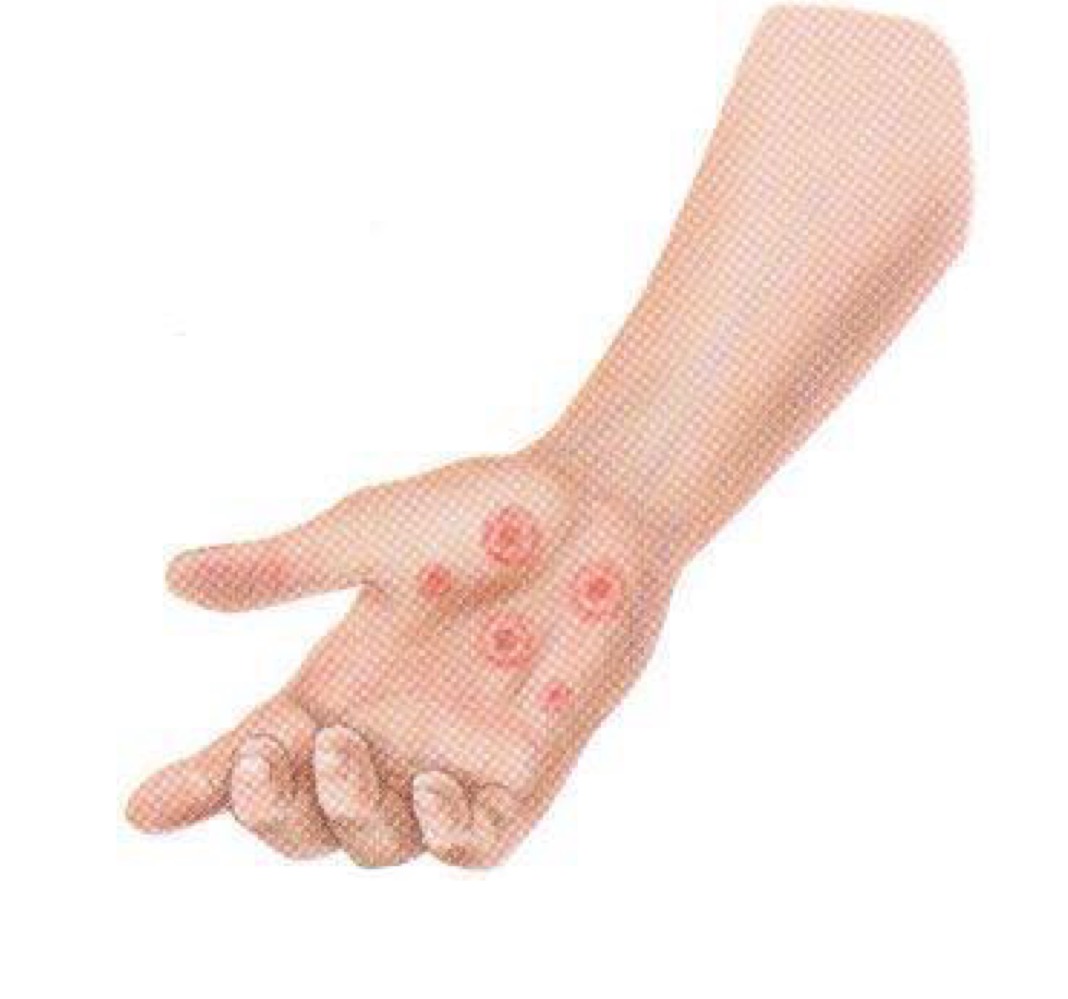
what pattern of skin lesion is this?
target/iris
description of skin lesion taht is circle within a circle
target/iris
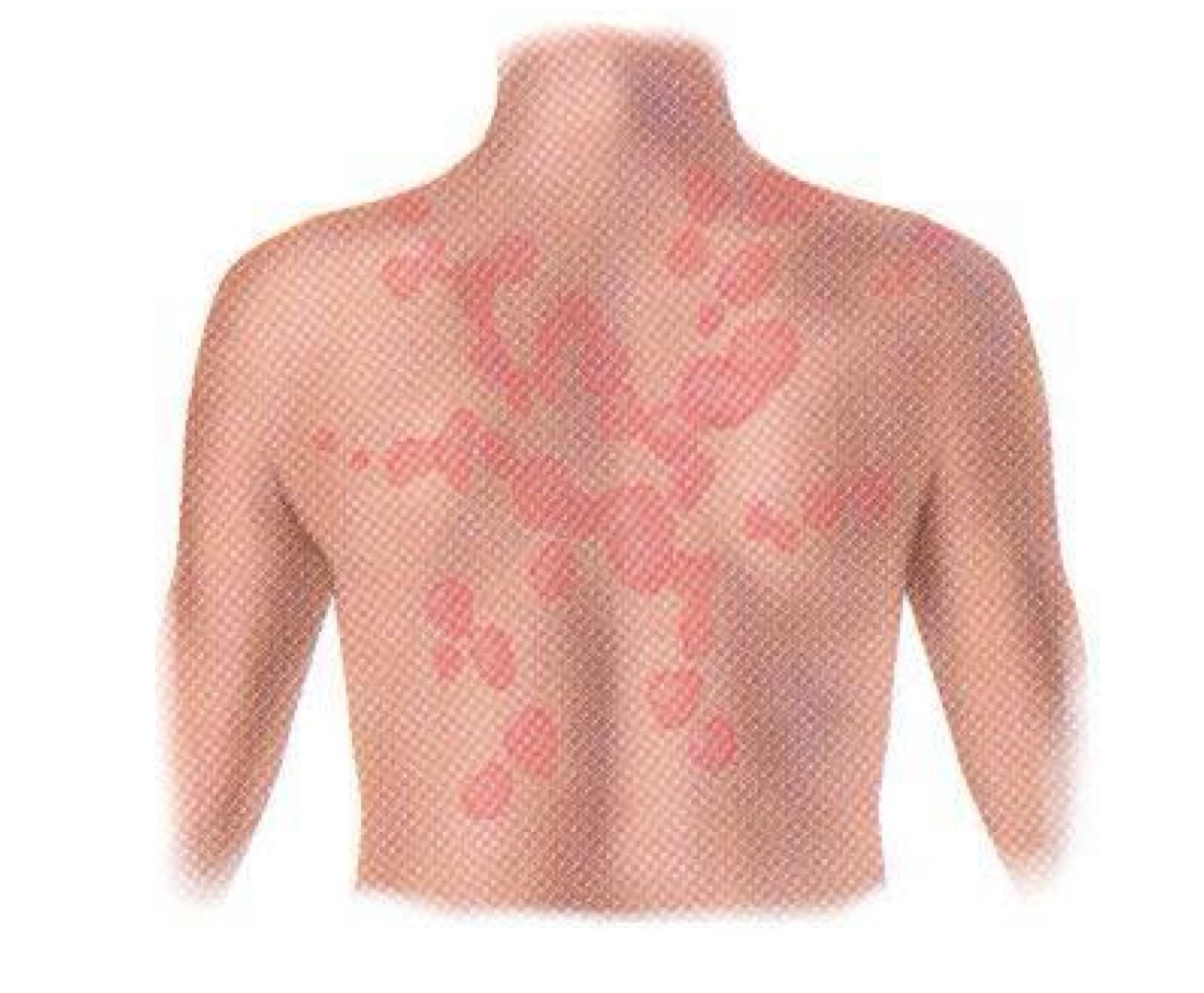
what pattern of skin lesion is this?
confluent
description of lesions that run together
confluent
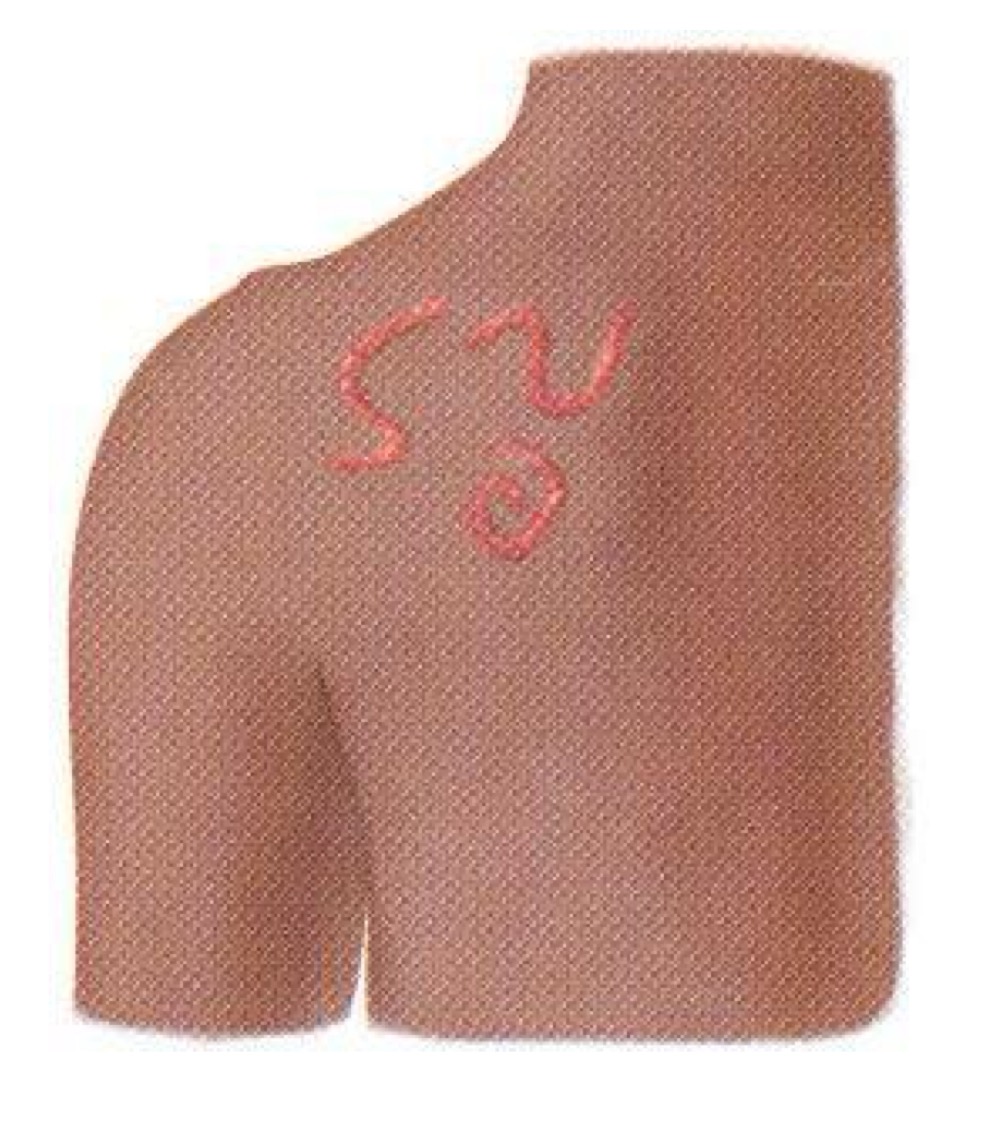
what pattern of skin lesion is this?
gyrate/serpiginous
description of lesions that are snake-like/wavy
gyrate
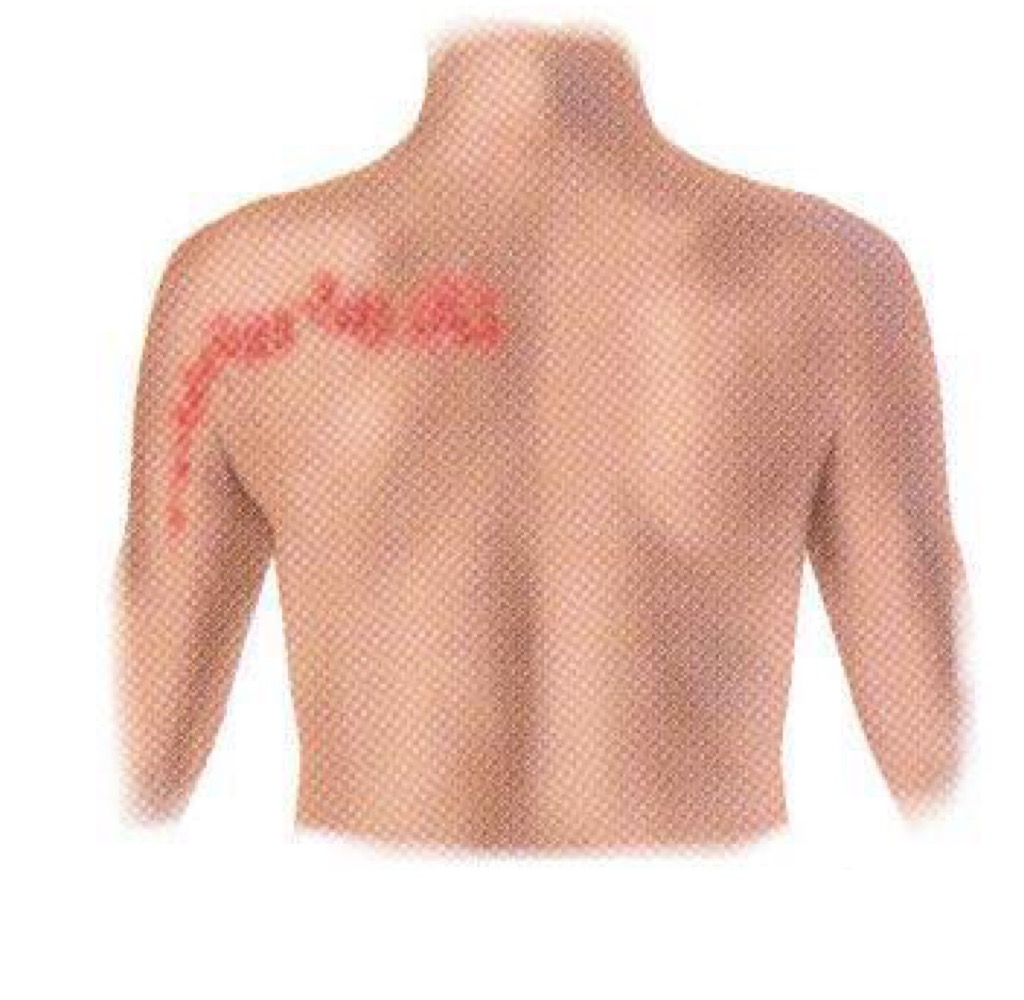
what pattern of skin lesion is this?
zosteriform
description of skin lesions that are in linear patteern along a nerve dermatome
zosteriform
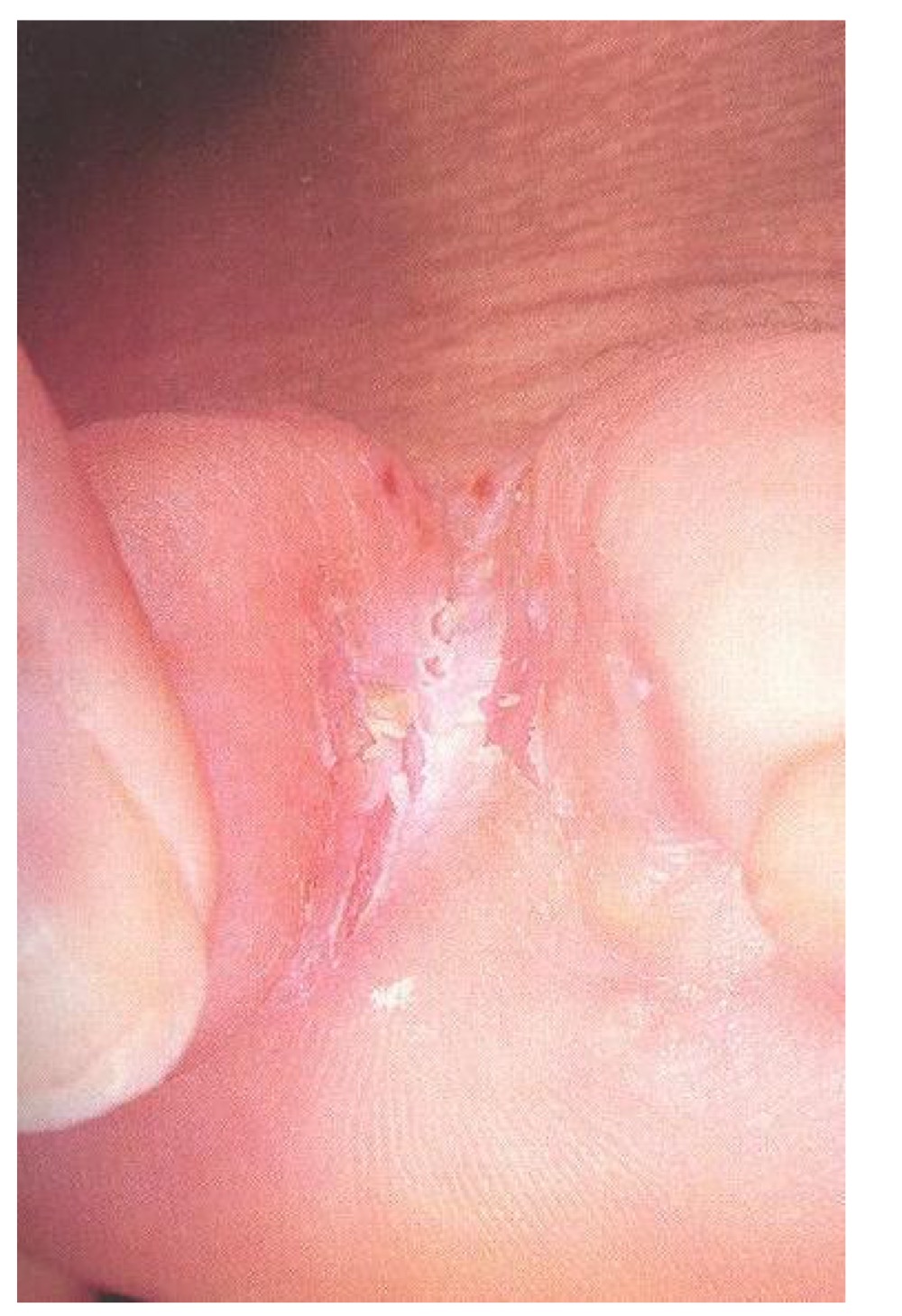
what pattern of skin lesion is this?
intertriginous
description of lesion that is found between folds of skin
intertriginous
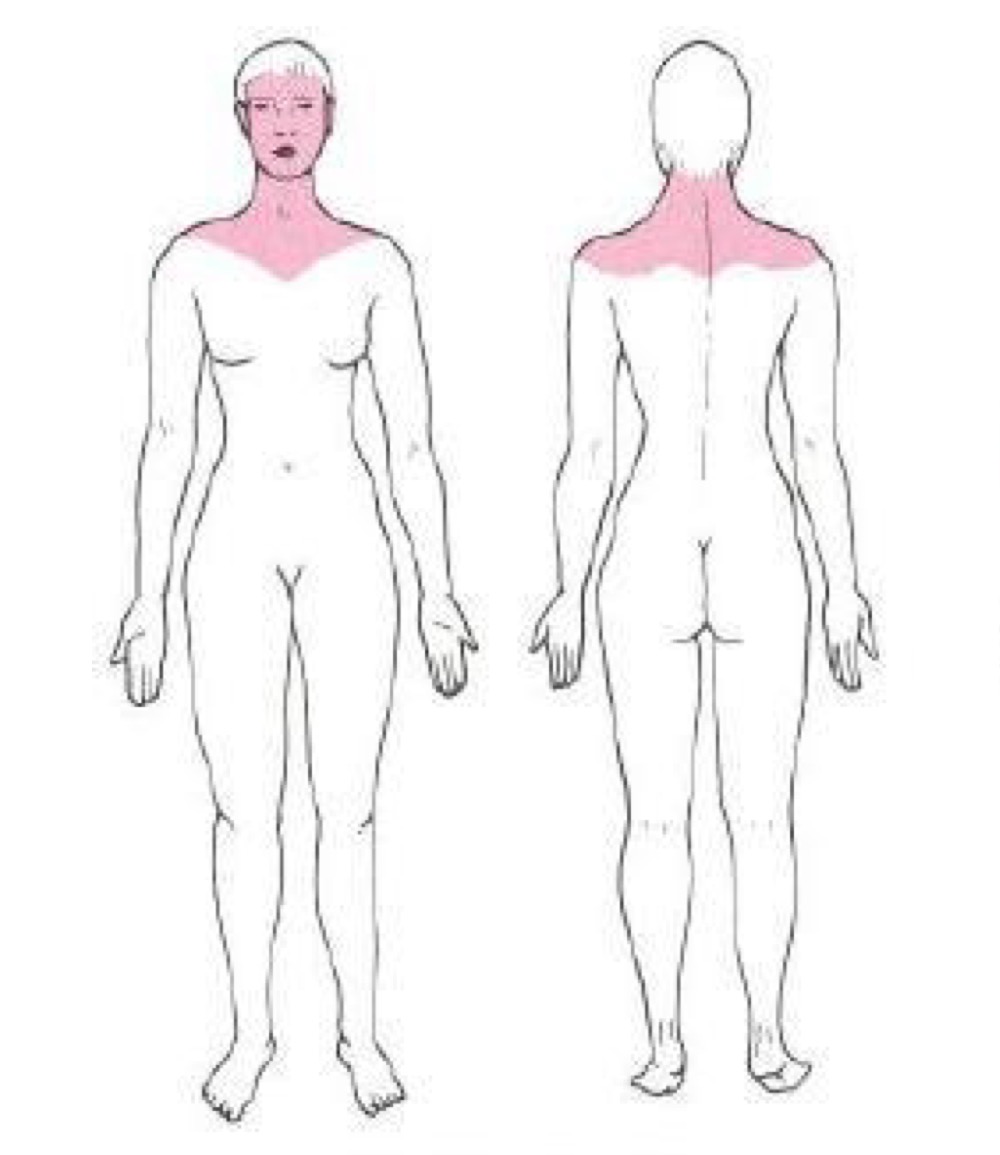
what distribution of skin lesion is this
acne vulgaris
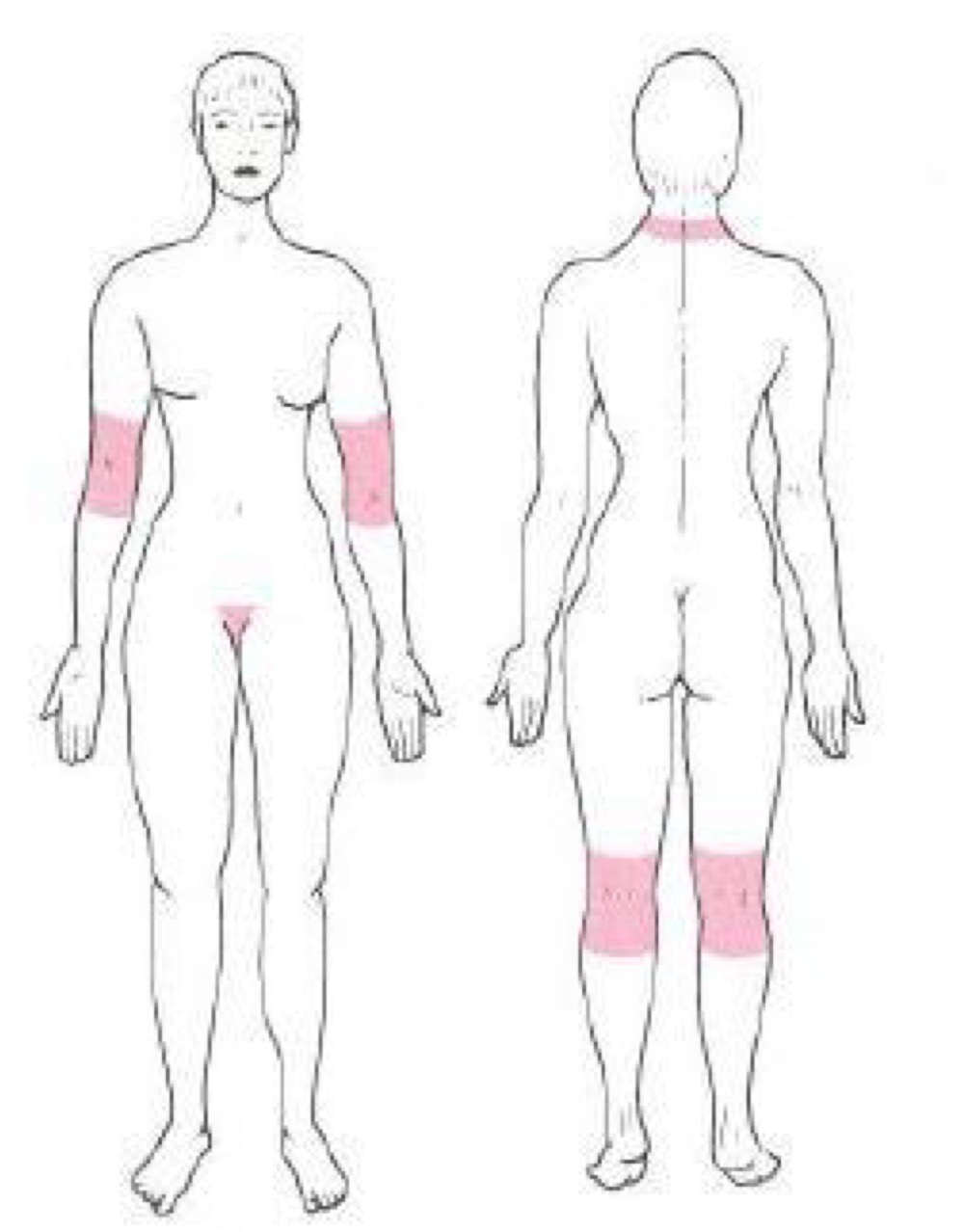
what distribution of skin lesion is this
atopic dermatitis
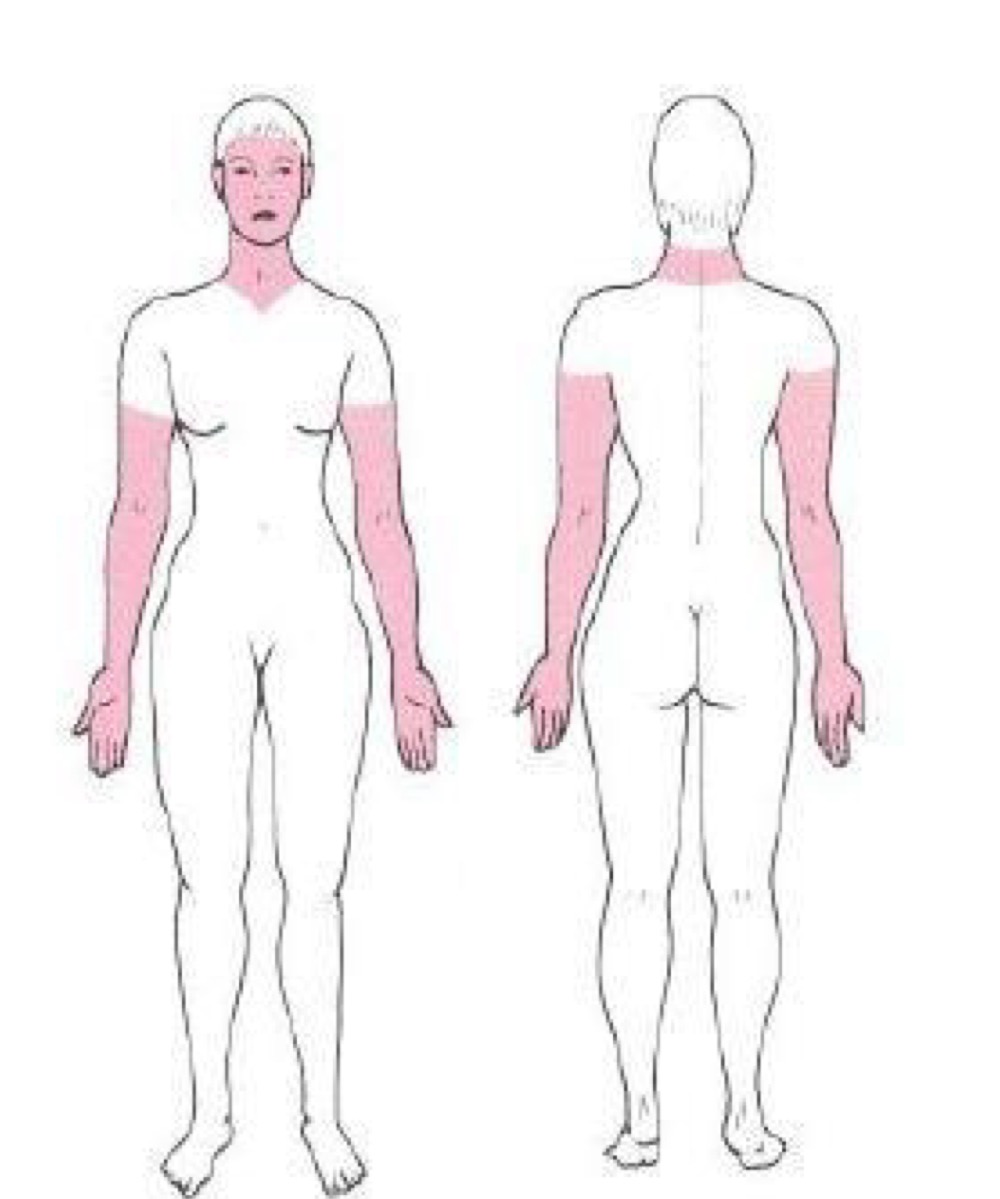
what distribution of skin lesion is this
photosensitive eruptions
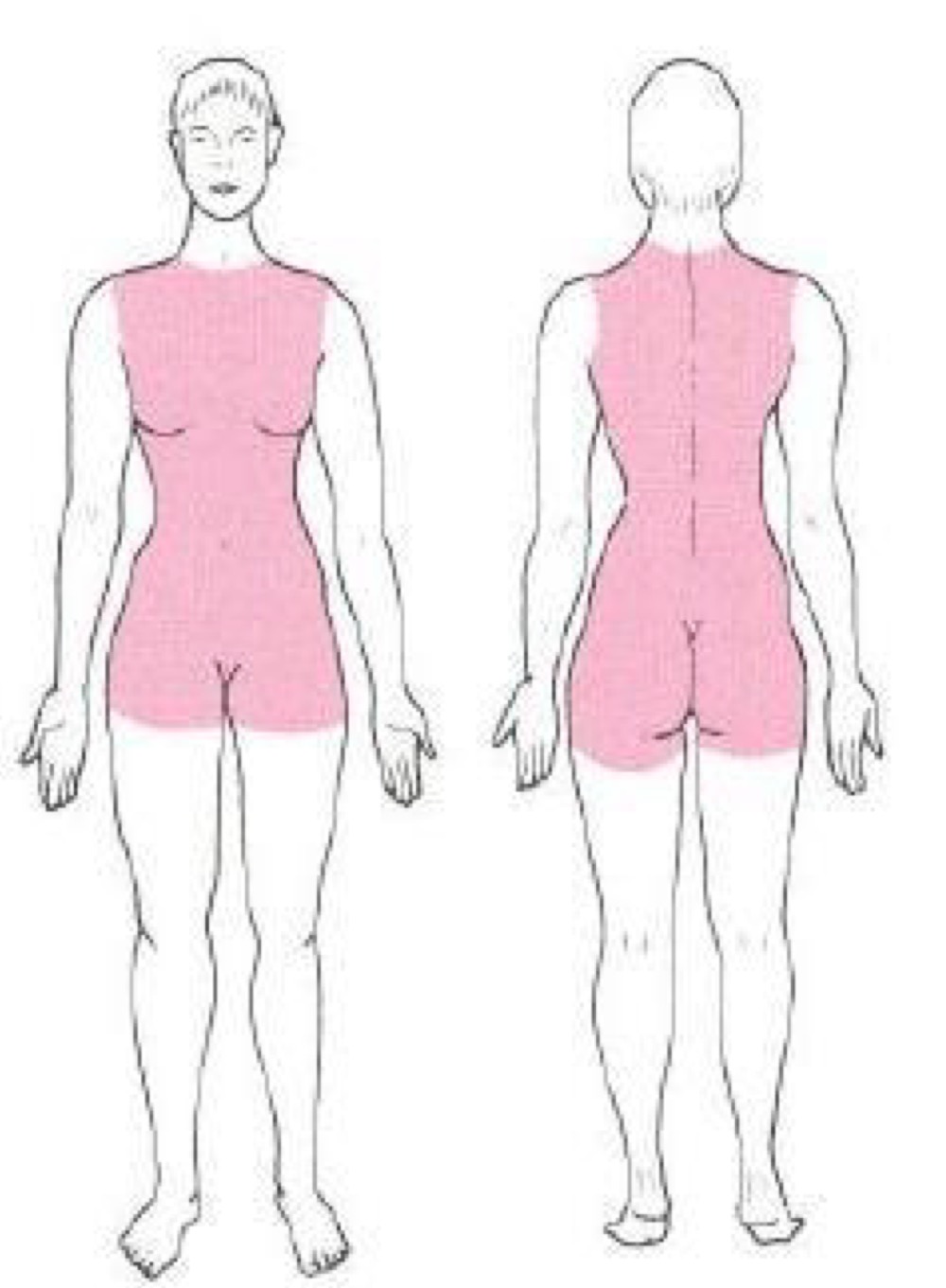
what distribution of skin lesion is this
pityriasis rosea
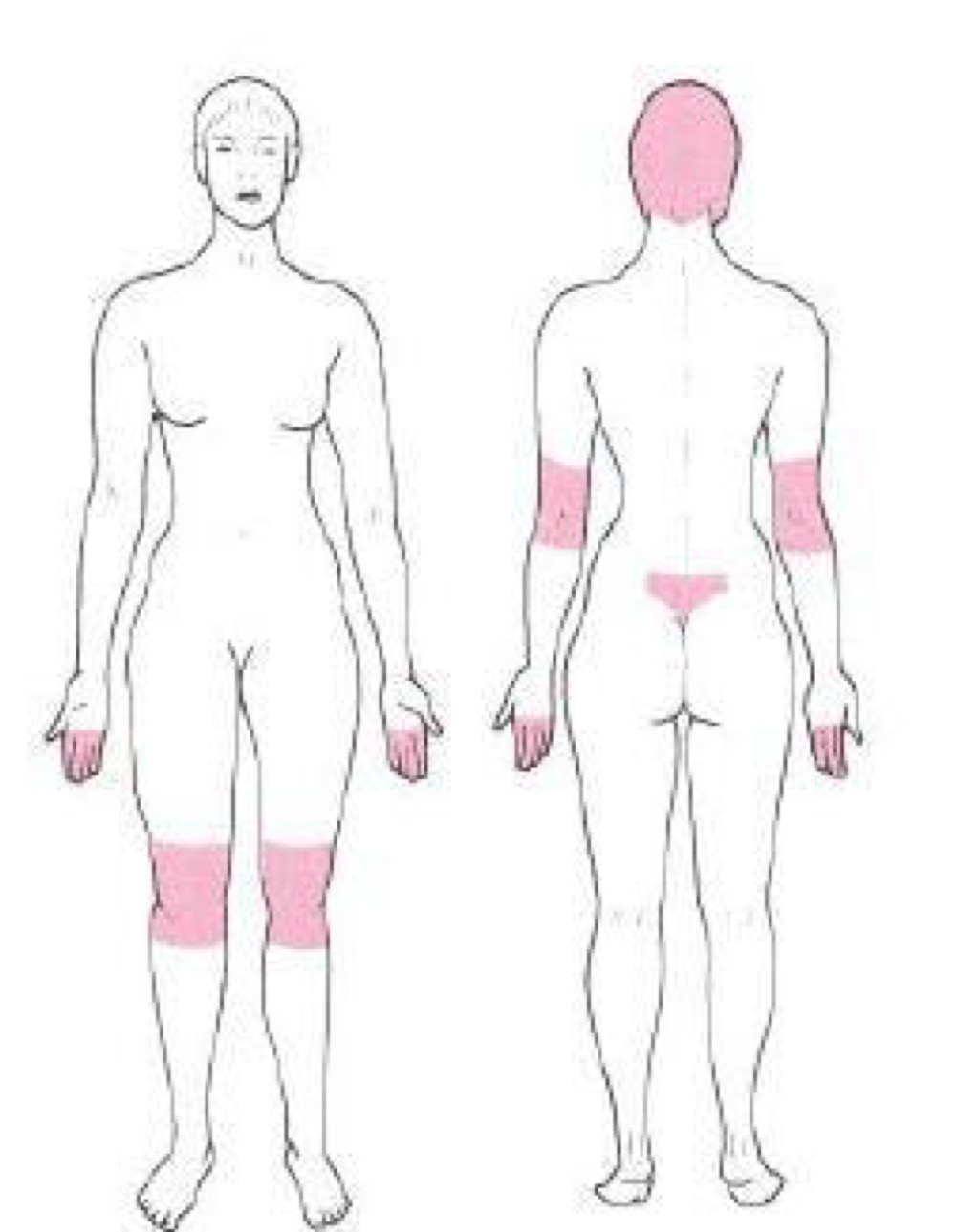
what distribution of skin lesion is this
psoriasis
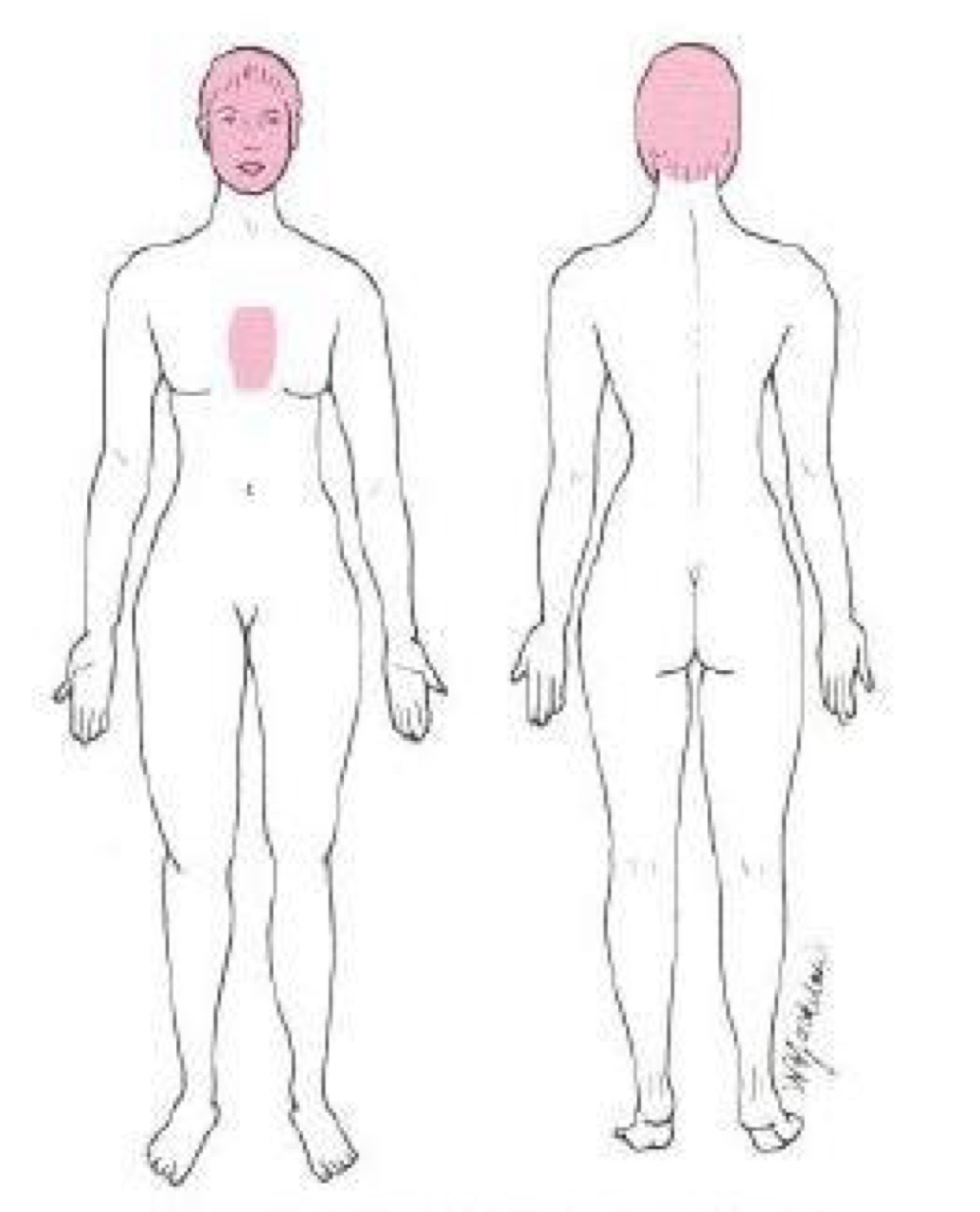
what distribution of skin lesion is this
seborrheic dermatitis
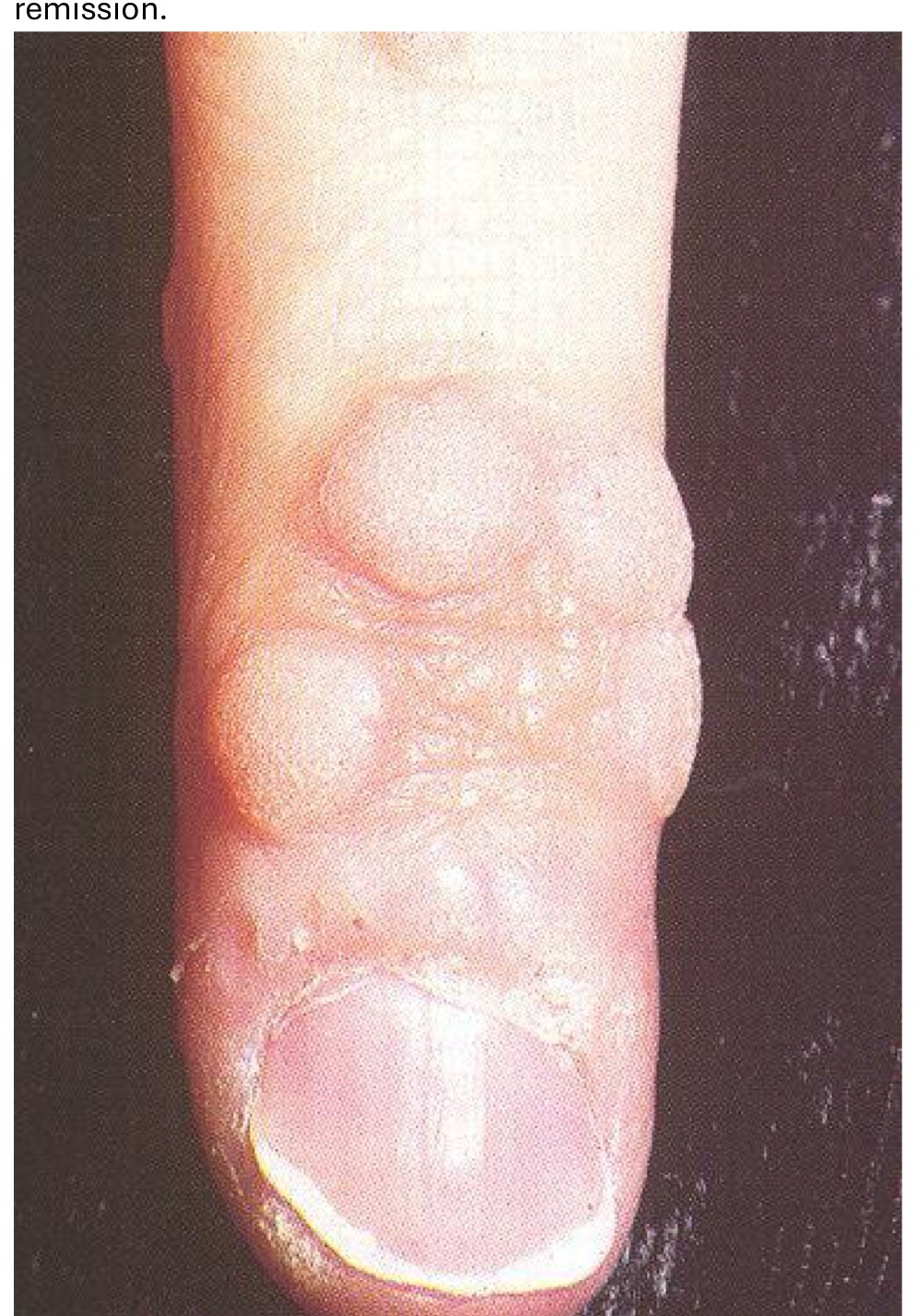
what do you call this?
verruca
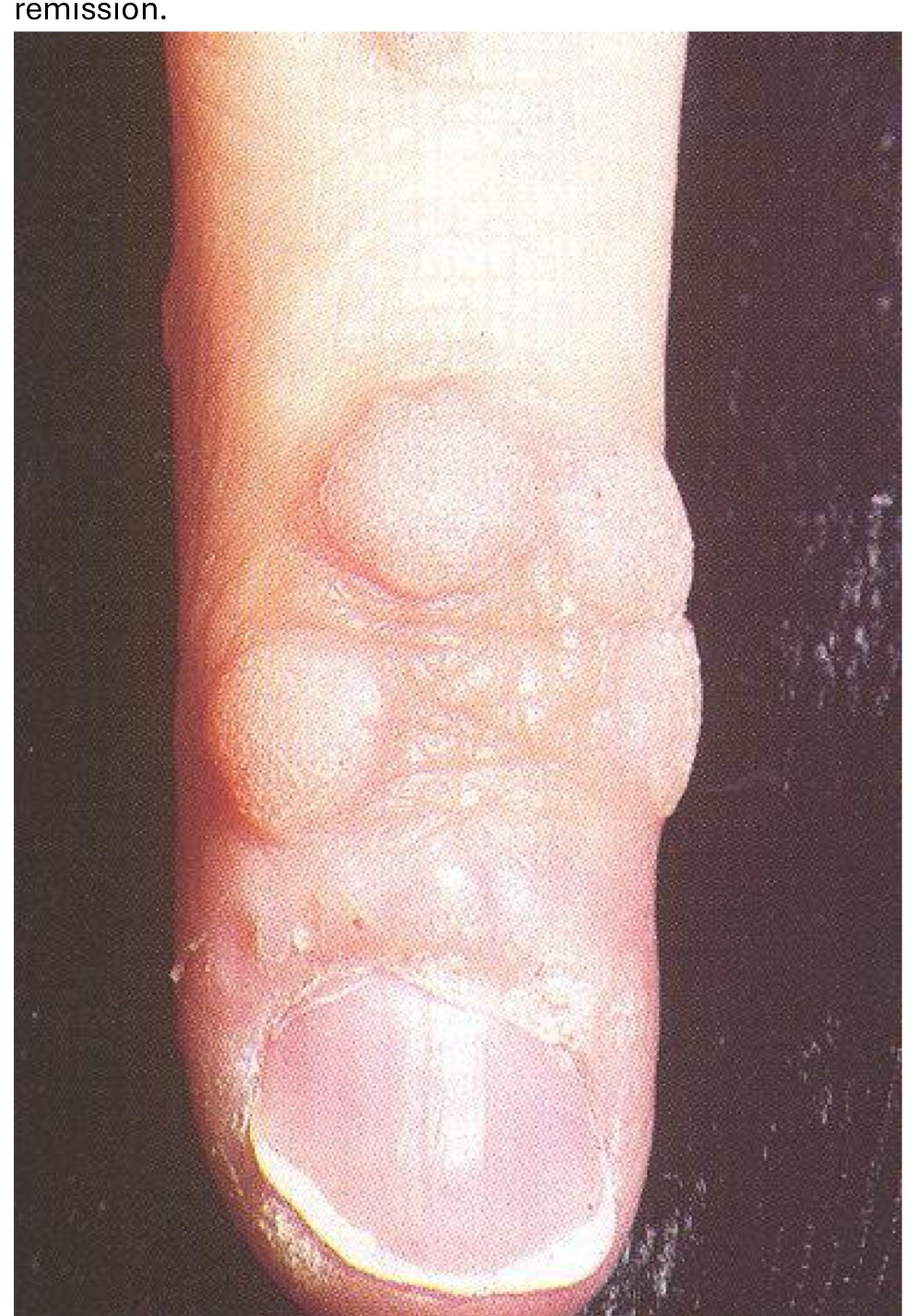
what is this caused by?
HPV infection of keratinocytes
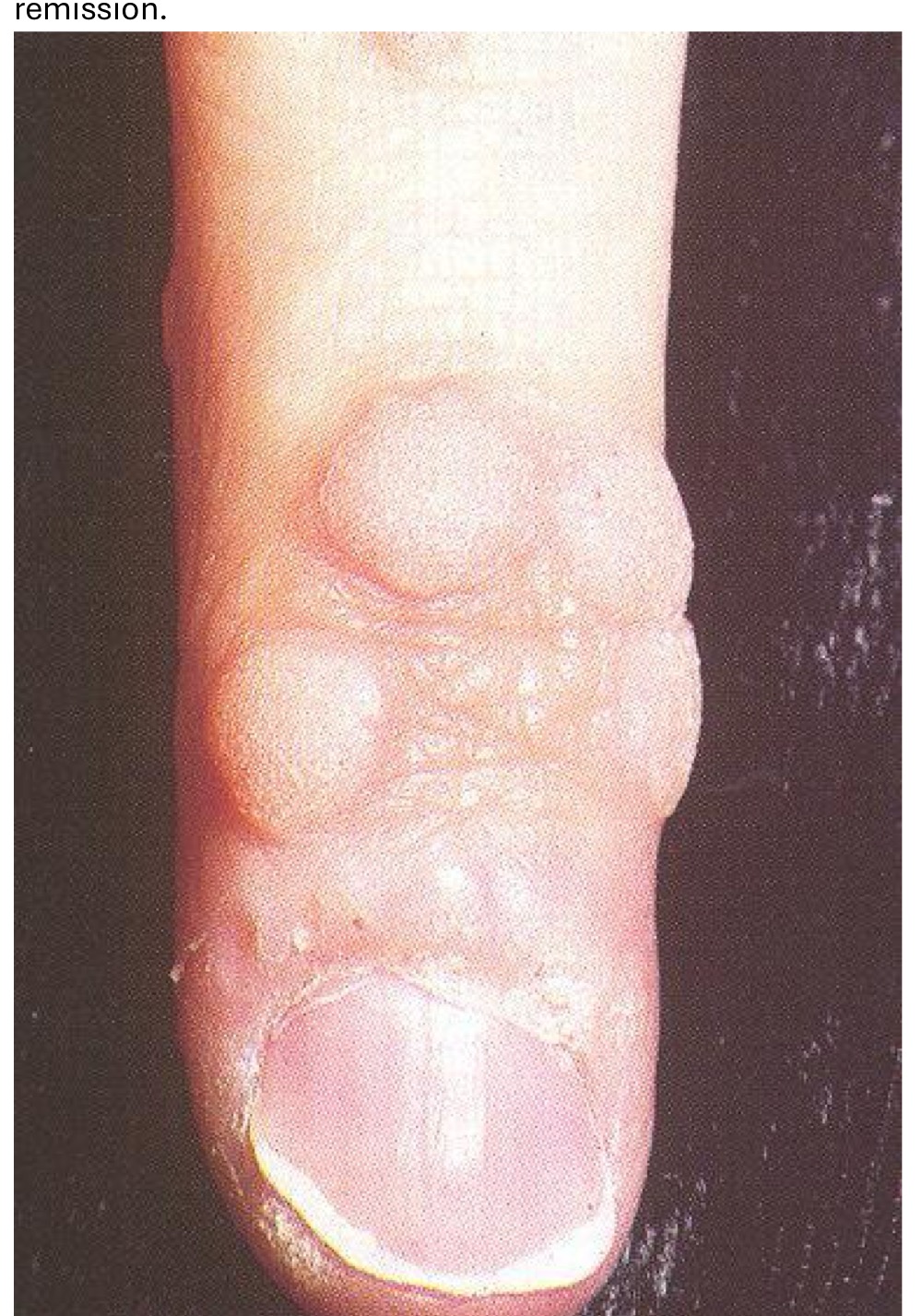
where on the body is this viral infection commonly found
hands, elbows, knees
if HPV infectino of keratinocytes are found on the feet, what do you call it?
plantar warts
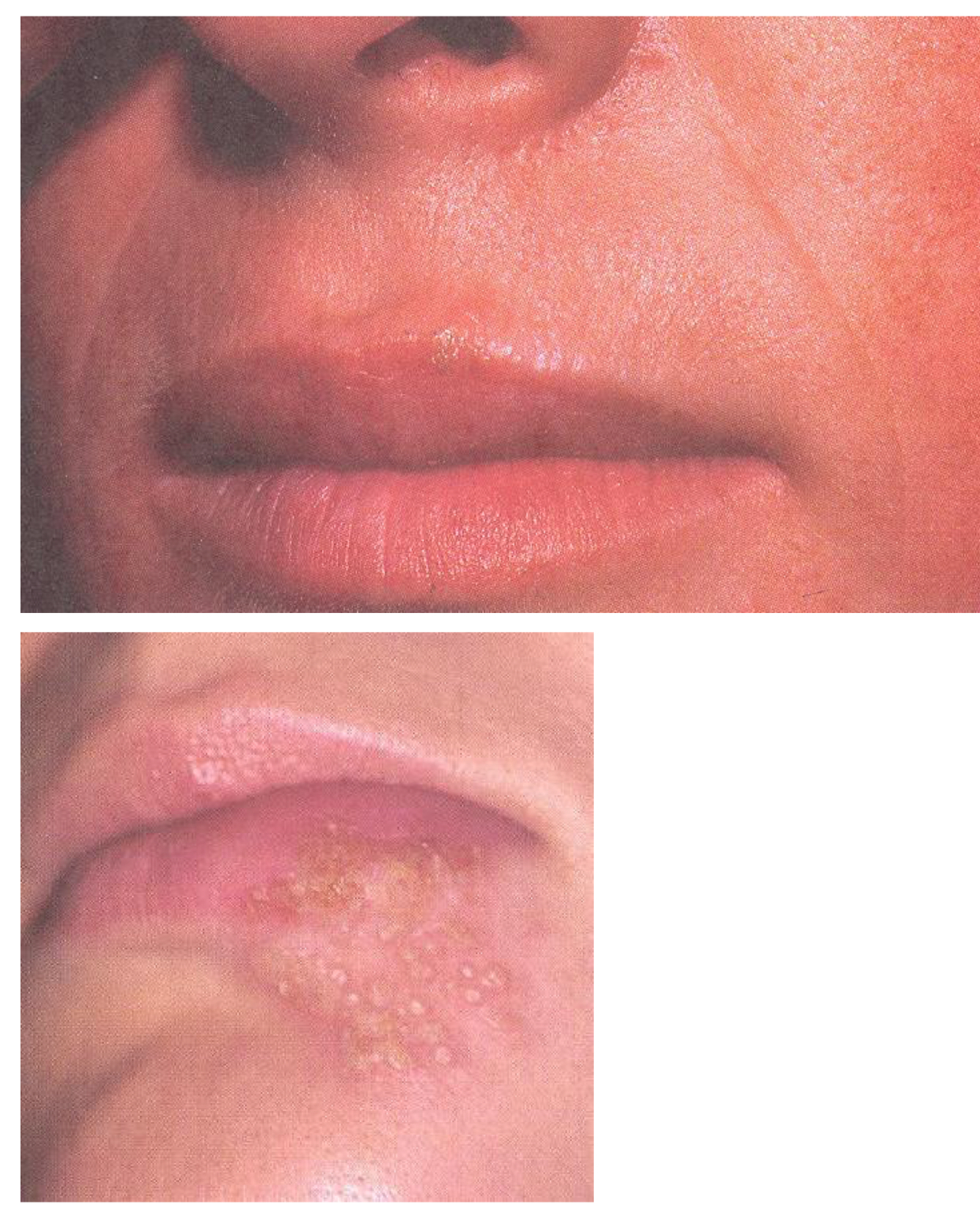
what do you call this?
herpes labialis/”cold sore”
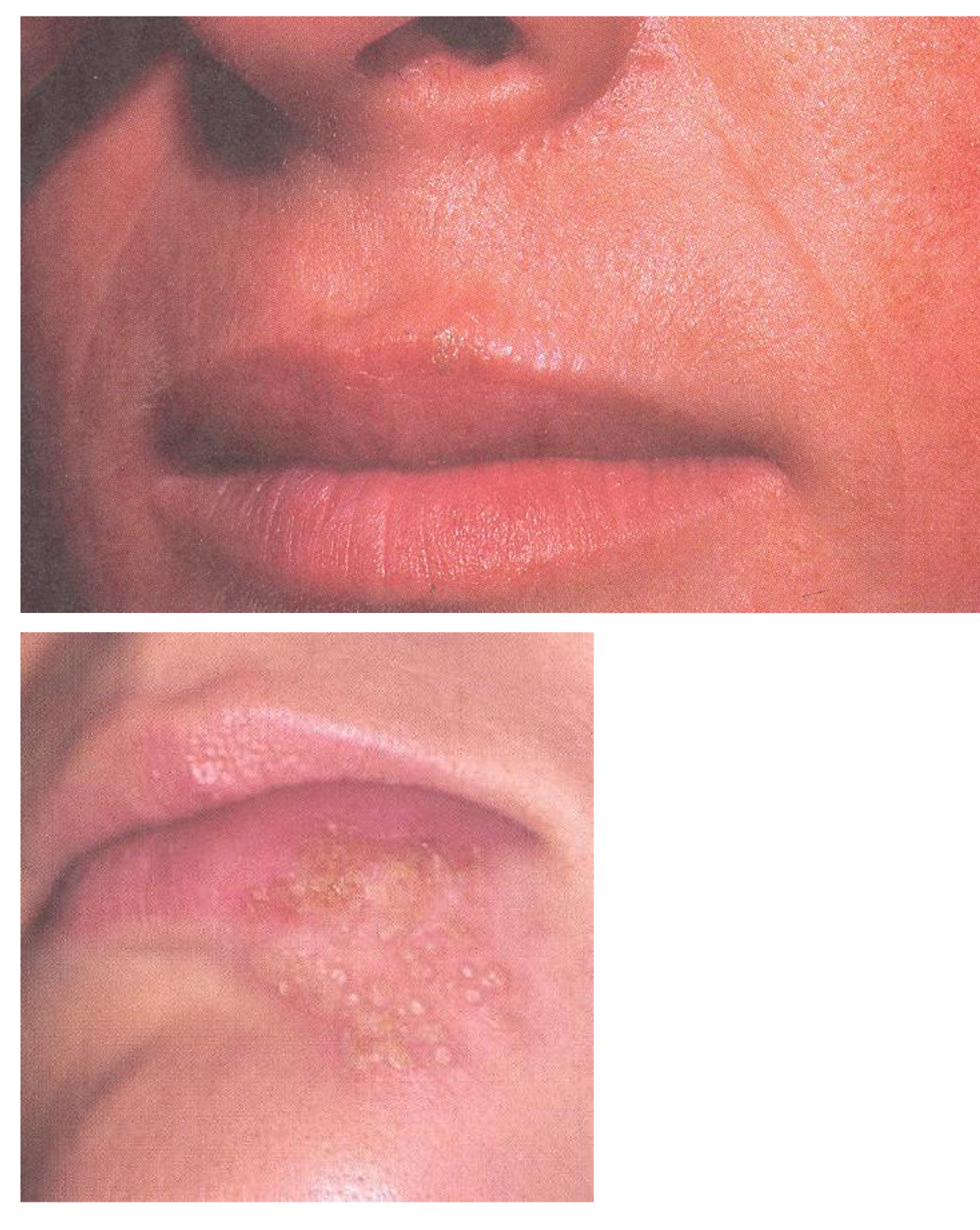
what infection is this caused by?
HSV1
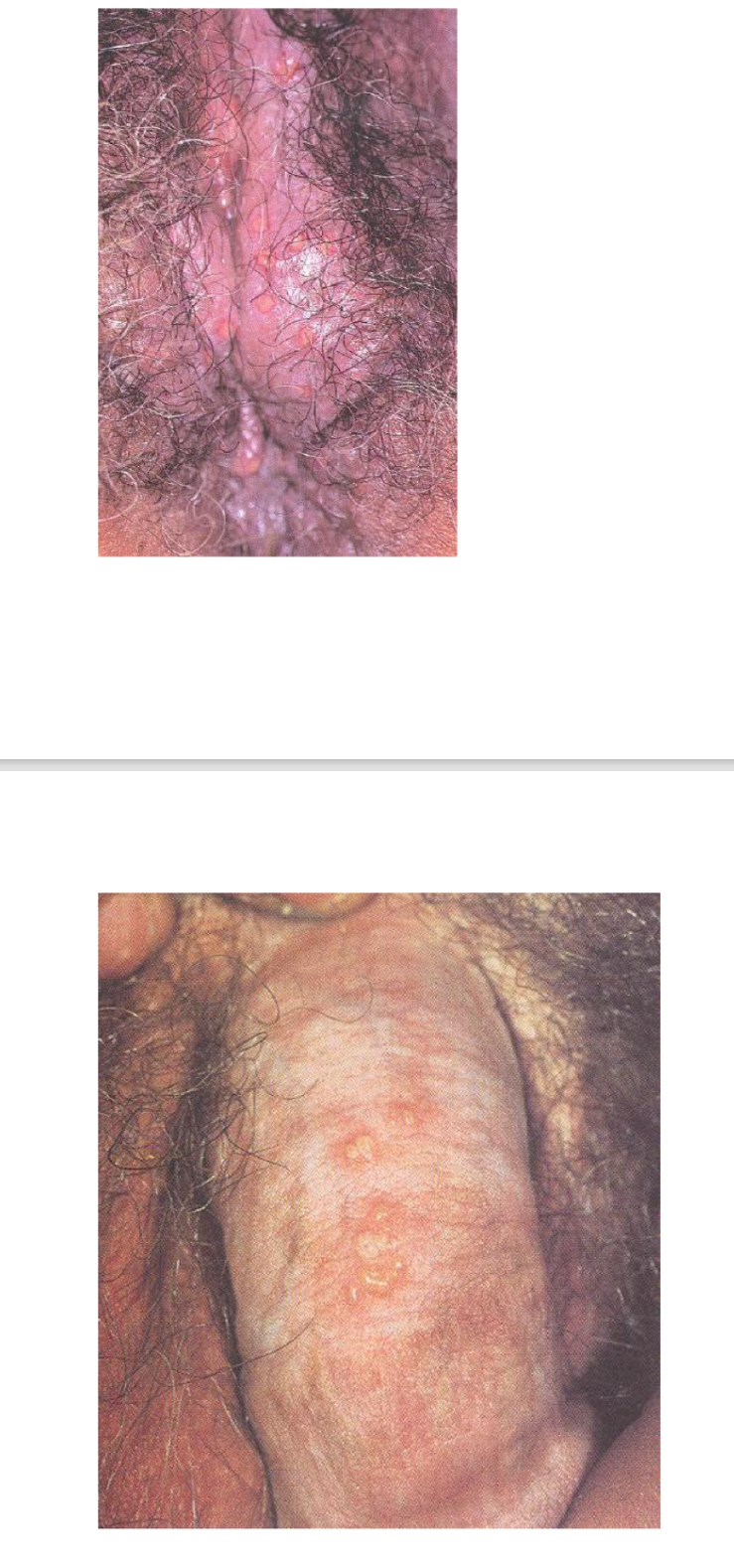
what do you call this?
herpes genitalis

what infection is this caused by
HSV2

what is this?
varicella/chickenpox
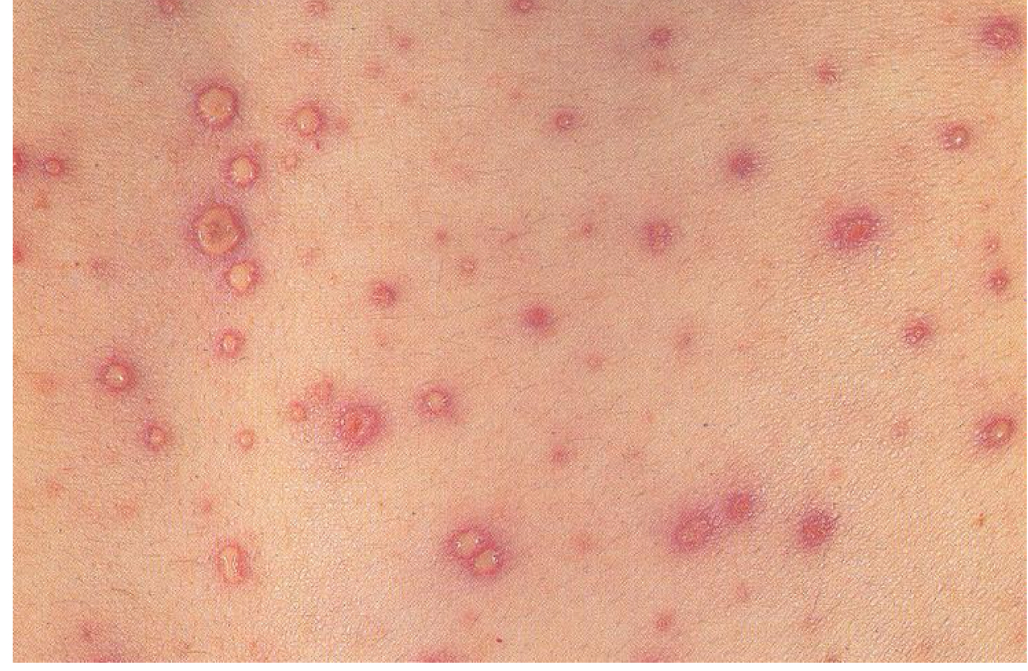
is this contagious?
yes, highly
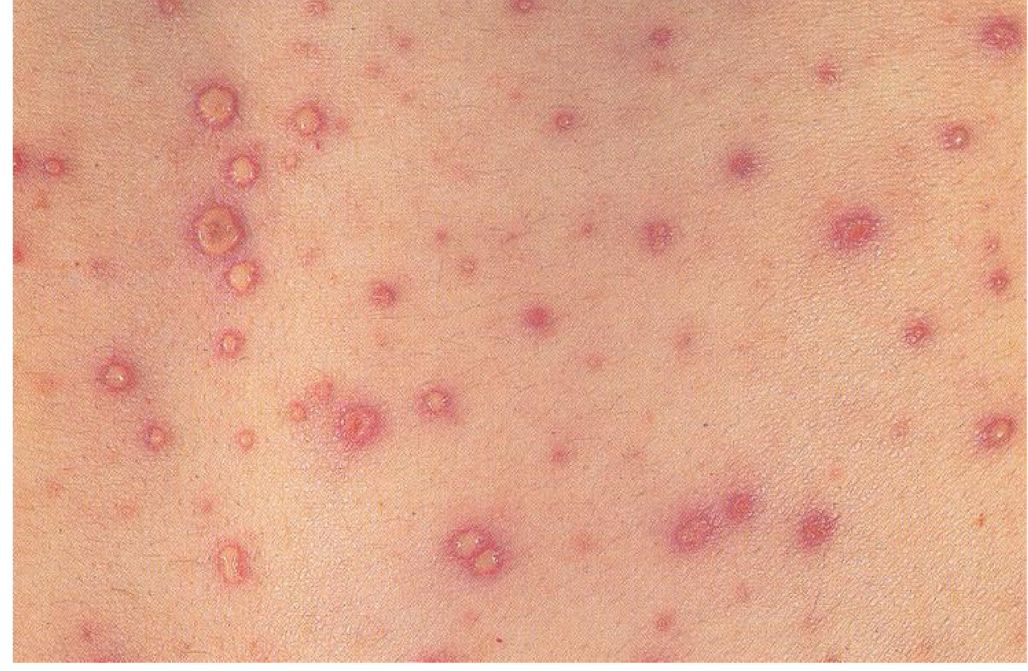
how long is the incubation period for this infection?
2 weeks

what symptoms would you expect with this presentation?
fever, malaise, headache, anorexia
what infection is this describing?
rash that begins in the trunk and spread to the face and extremities as red papules that quickly become umbilicated vesicles
chickenpox/varicella
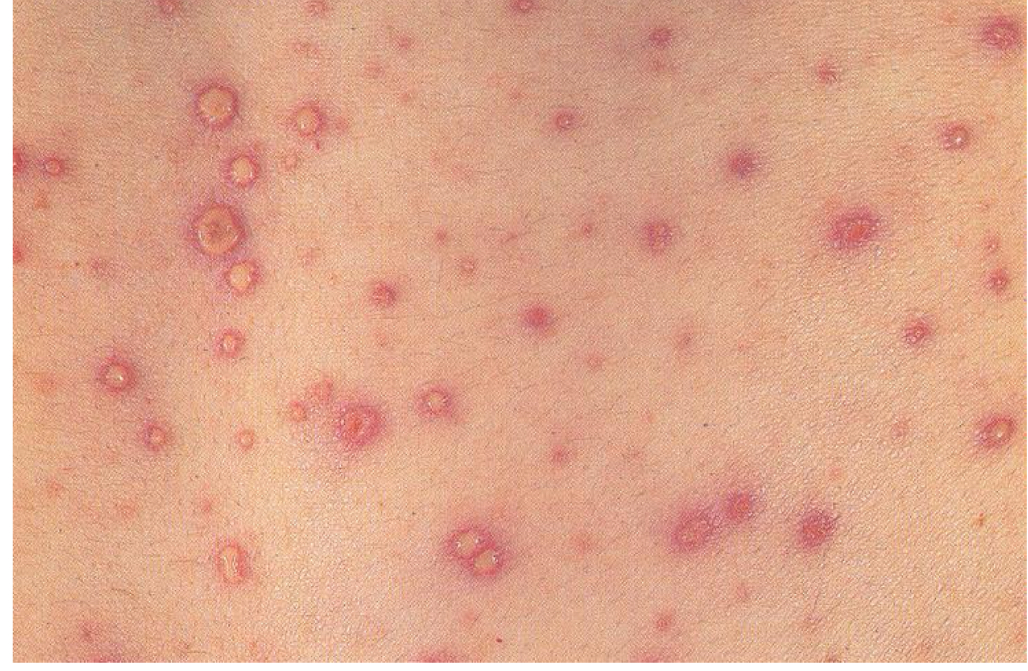
when does the infectious period start and end for someone with this infection?
just before the appearance of the rash until lesions crust over
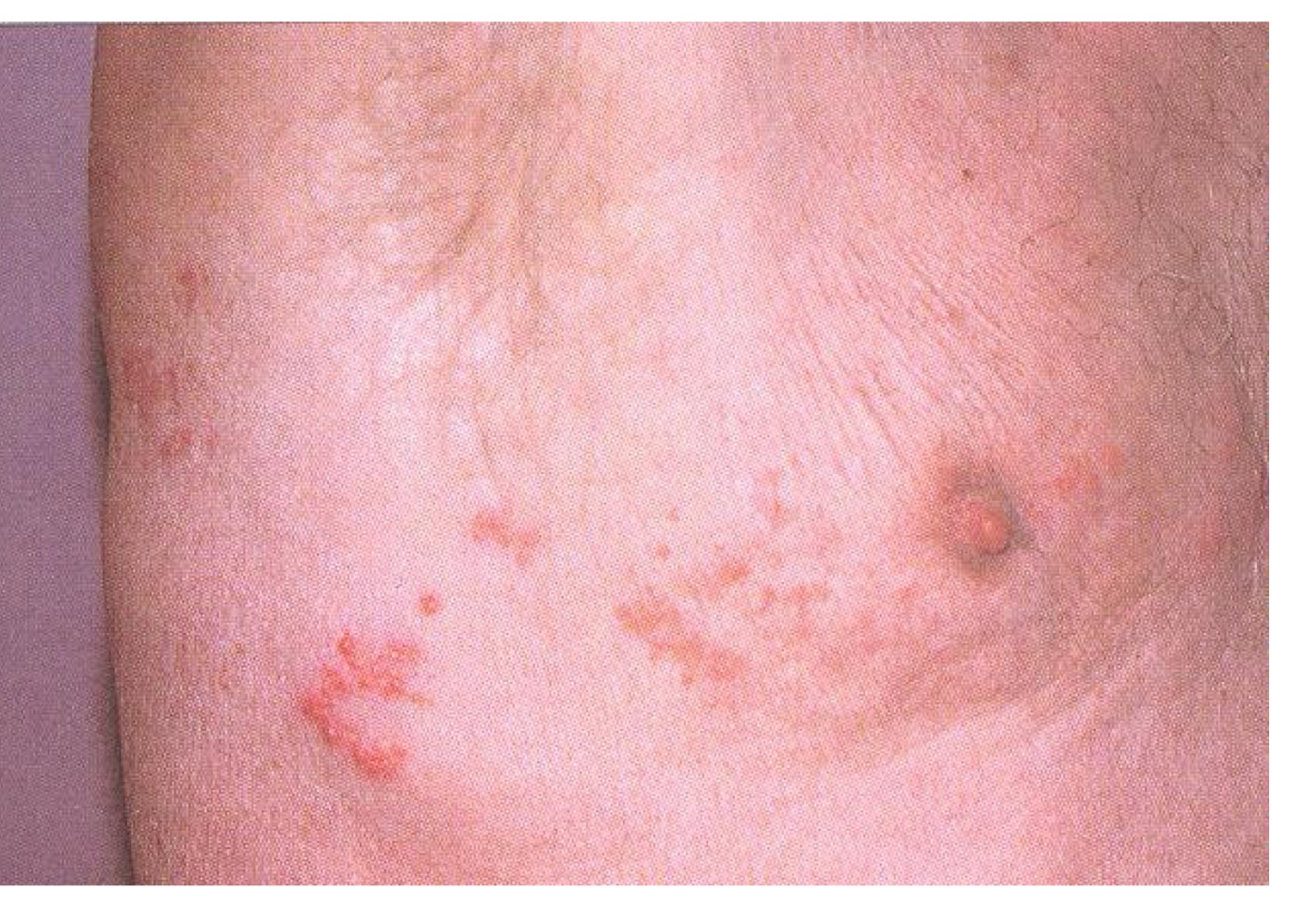
what infection is this?
herpes zoster/shingles
what is herpes zoster?
reactivation of varicella virus usually after 55 yrs old
what infection is this describing?
lesions that appear along spnial or cranial nerve dermatome
herpes zoster/shingles
what infection can have post herpetic neuralgia lasting months to years after infection
herpes zoster/shingles

what infection is this?
rubella (german measles)
what infection is this describing?
pink to red macules and papule beginning of the face and neck, spreading to the trunk and extremities, usually resolving in 3 days
rubella/german measles
what is the difference between rubella and rubeola
rubella has milder symptoms and no Koplik’s spots
T/F: rubella infection of mother during pregnancy has no impact on the child
false, child is at risk for birth defects
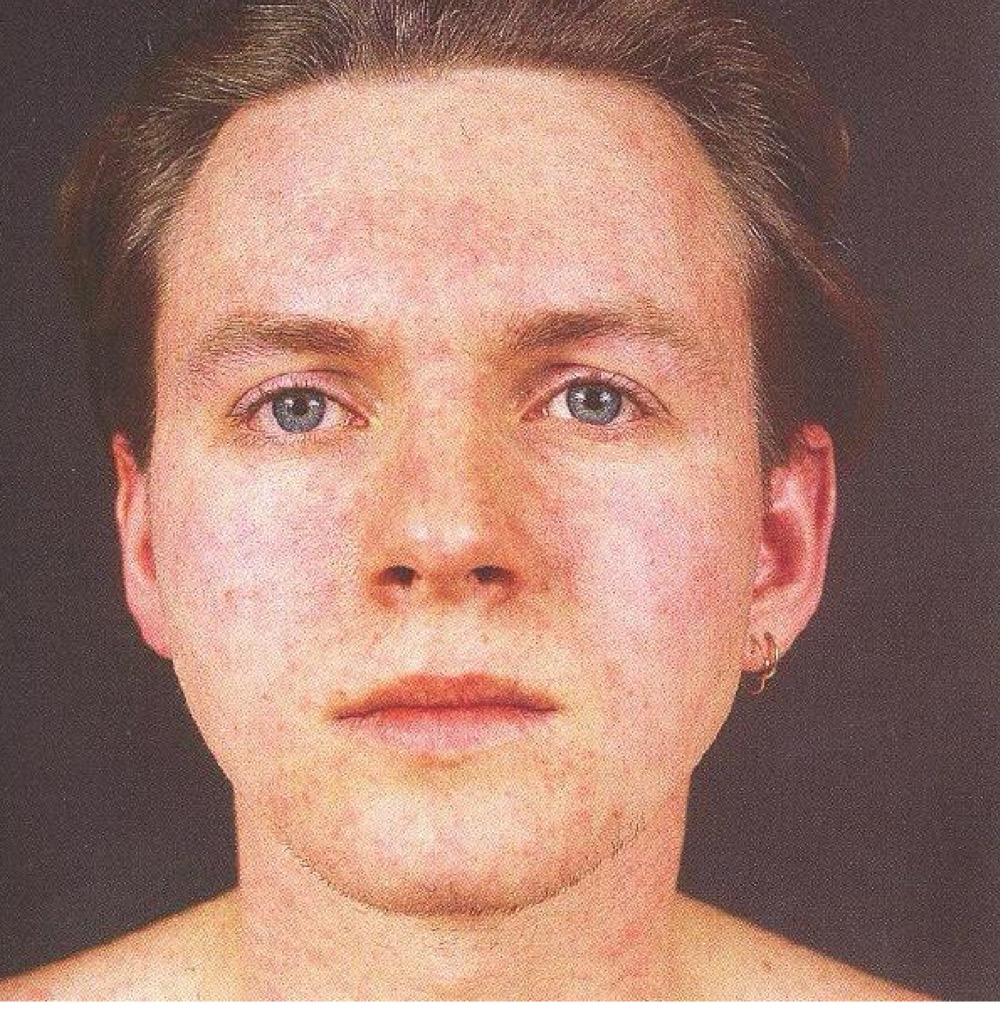
what symptoms would accompany this presentation?
malaise, headache and lymphadenopathy
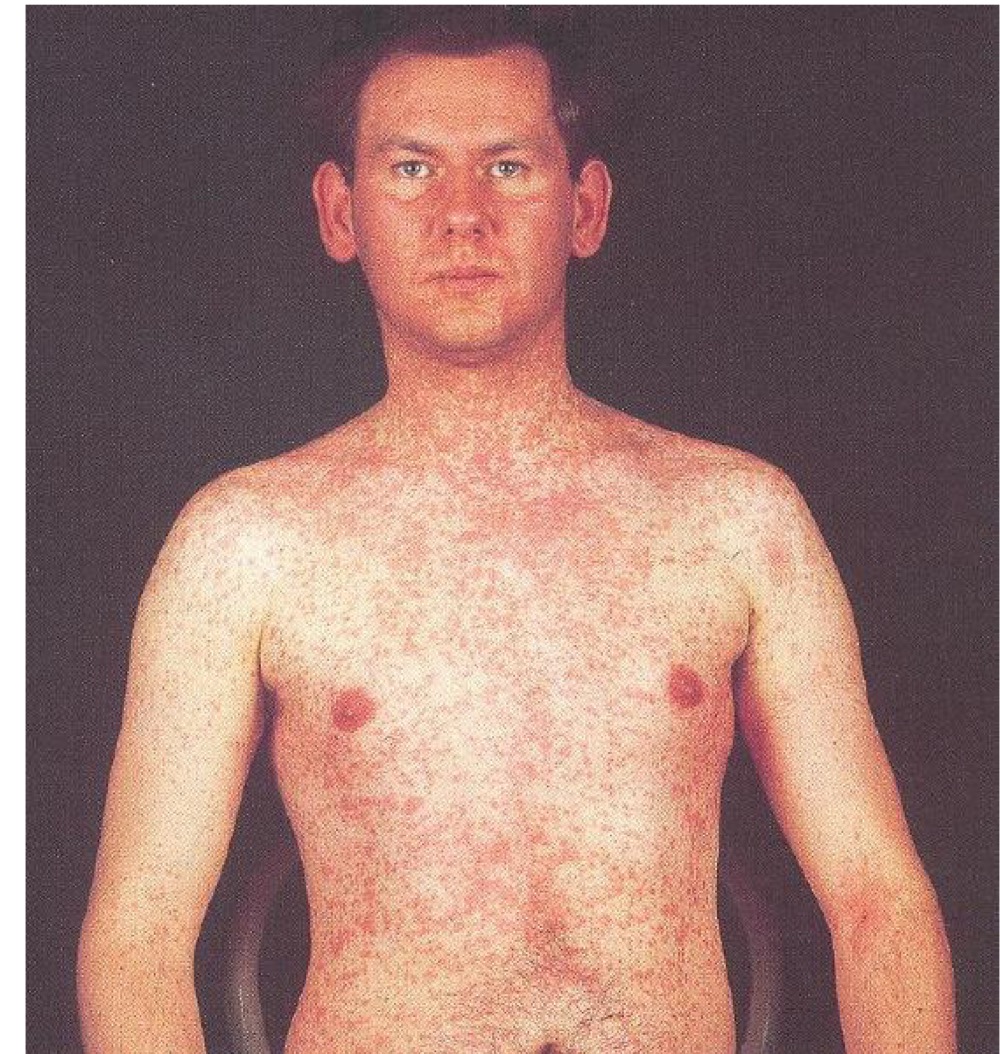
what infection is this?
rubeola (measles)
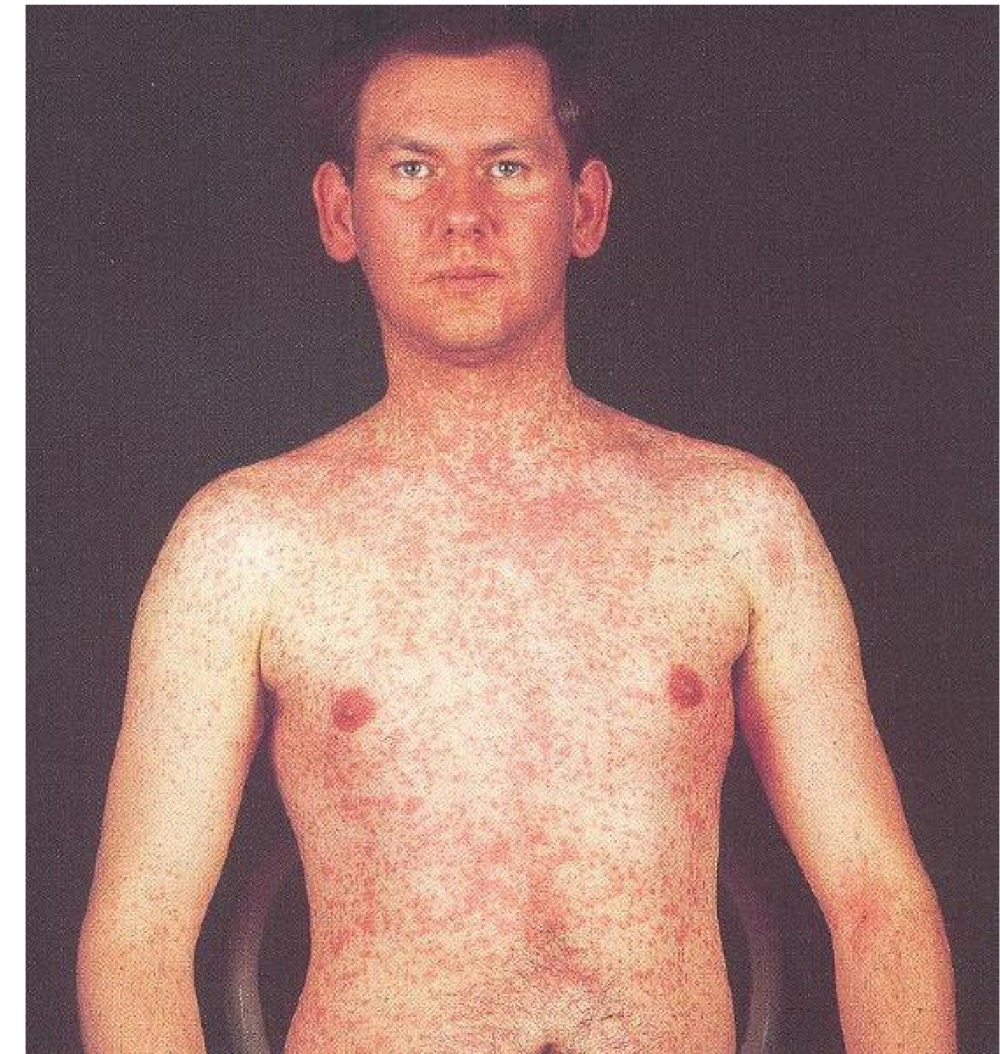
how is this infection spread?
respiratory droplets
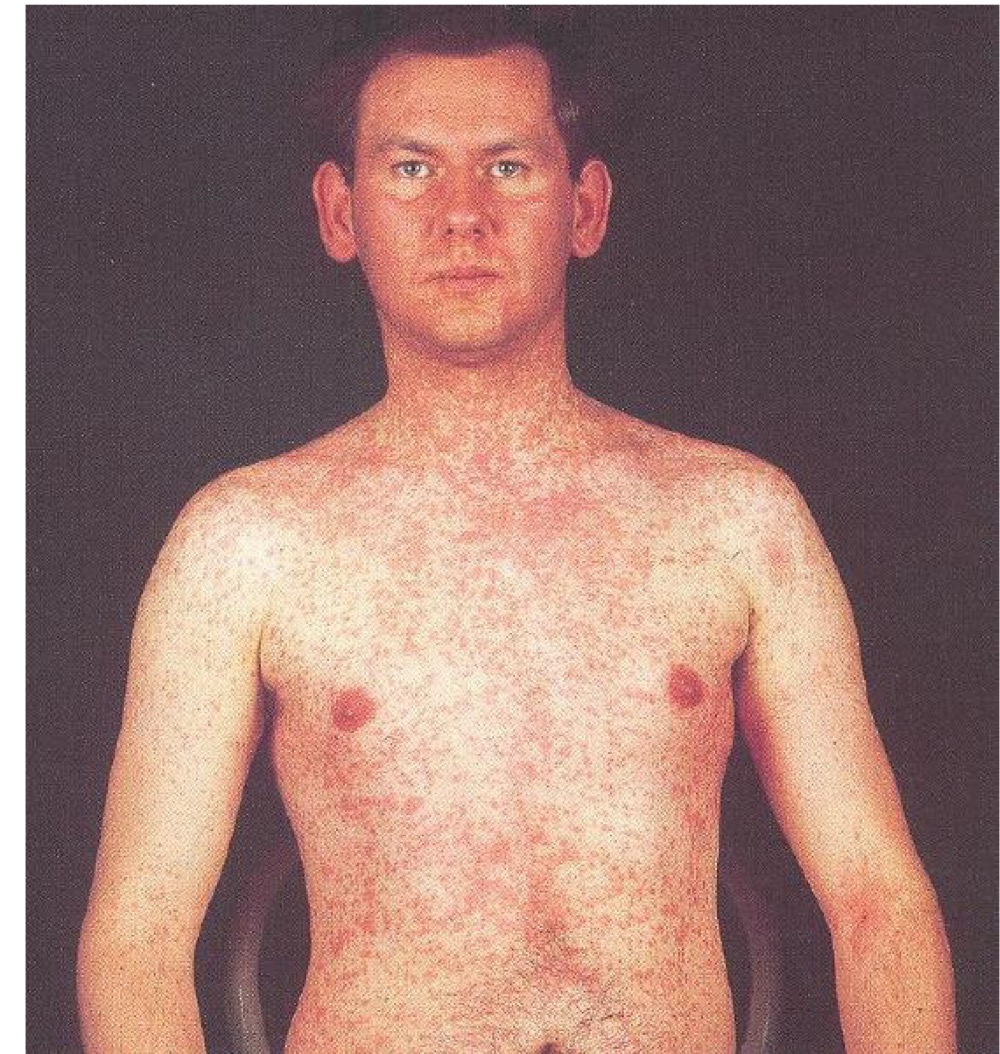
what other diagnostic features would you expect with this presentation
koplik’s spots (white spots on buccal mucosa)
cough
coryza
conjunctivitis
photophobia
what infection is this describing?
maculopapular rash beginning near ears and spreading to the trunk and extremities with a fever exceeding 104 degrees
white spots can be seen on the inner cheek
rubeola (measles)
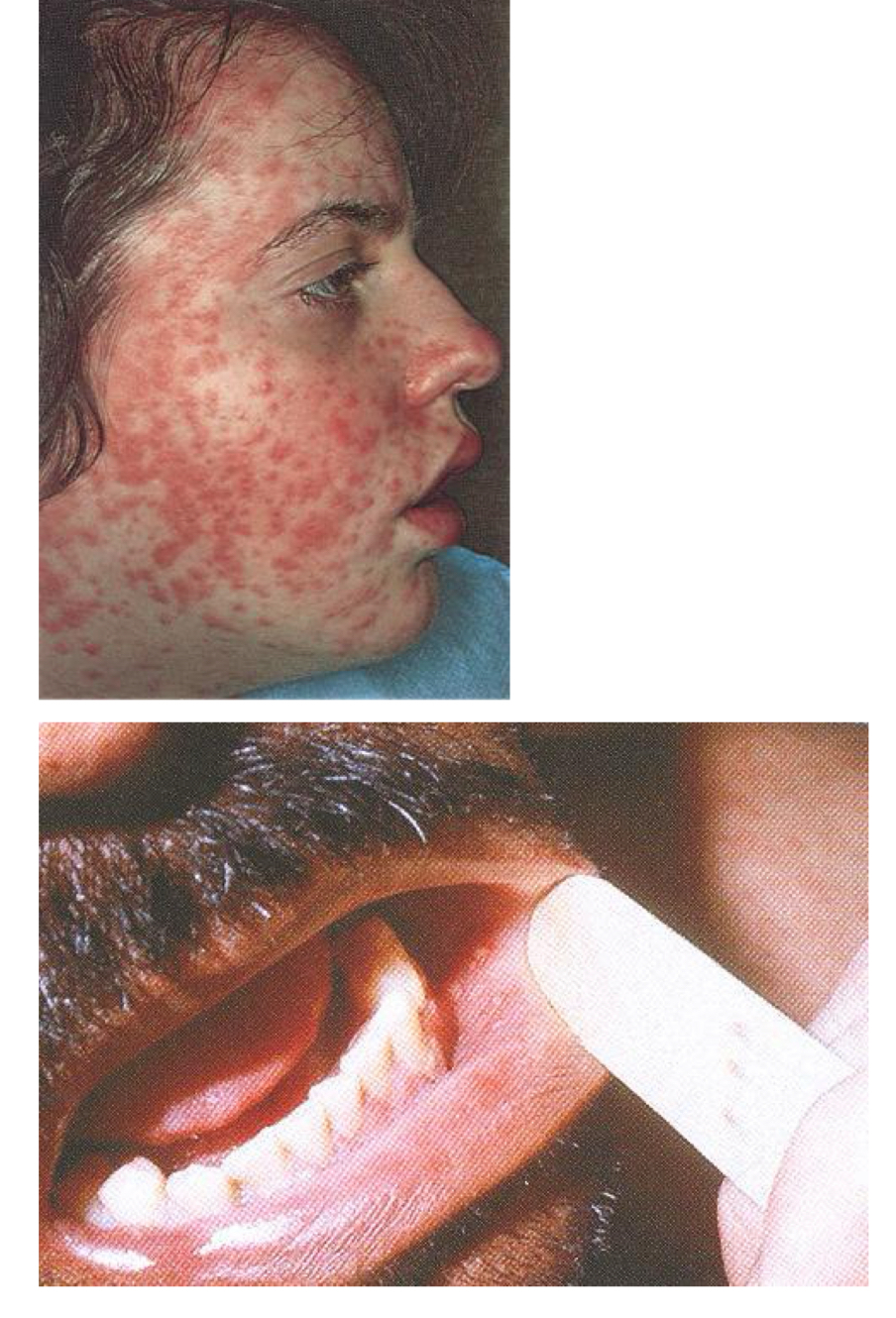
what infection is this?
rubeola (measles)
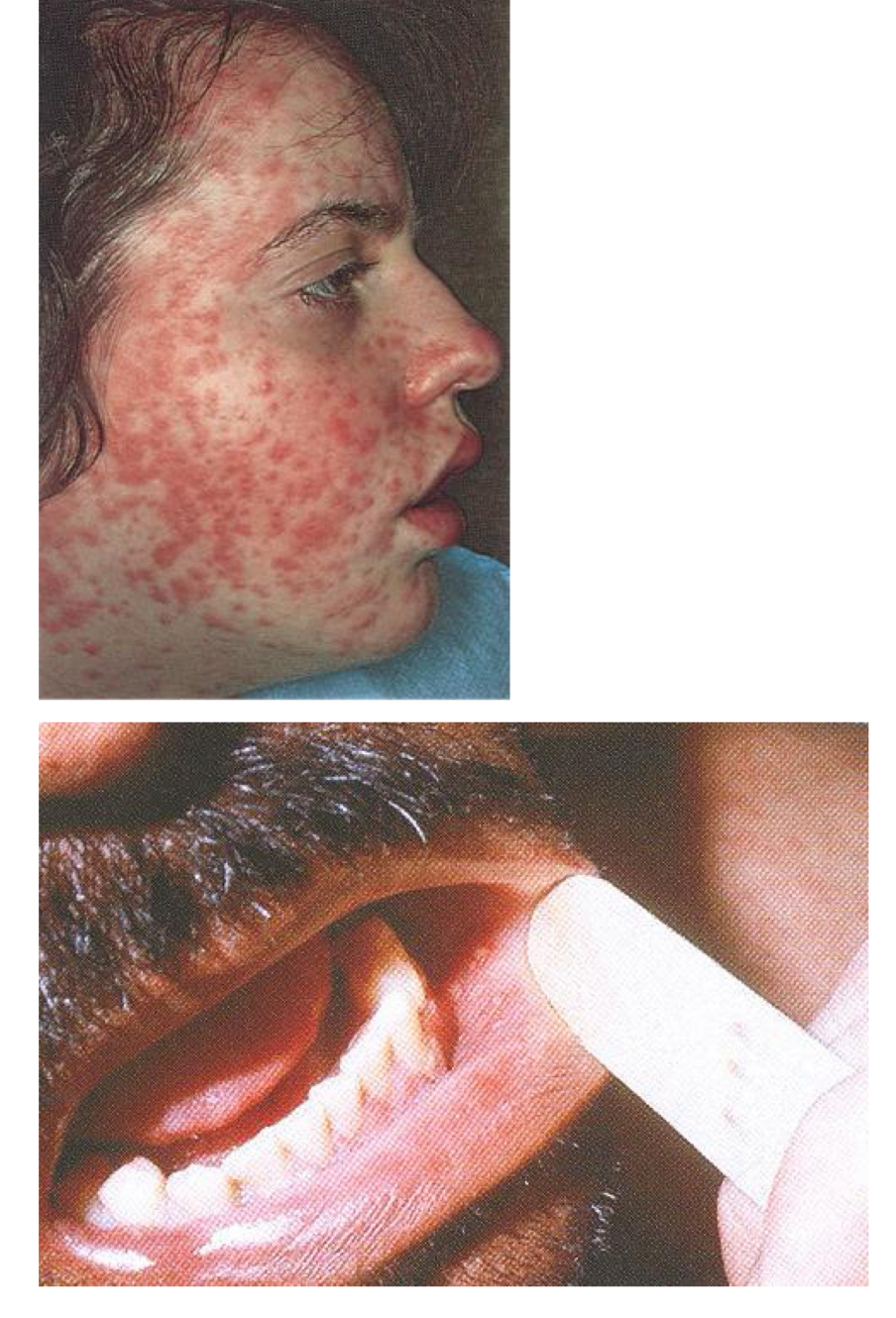
what do you call the diagnostic feature seen in the bottom picture? what is it diagnostic of?
koplik’s spots (diagnostic for rubeola/measles)